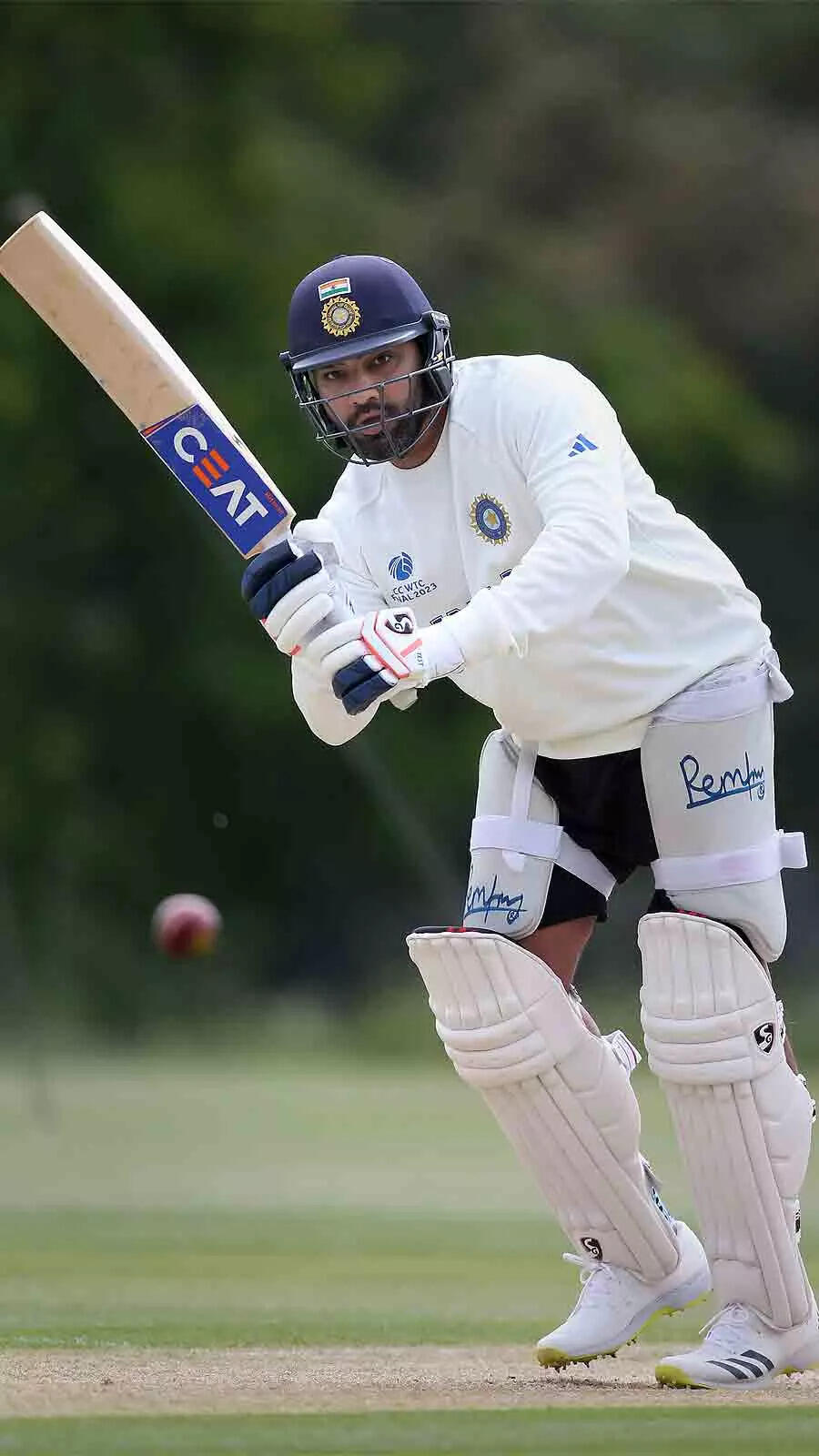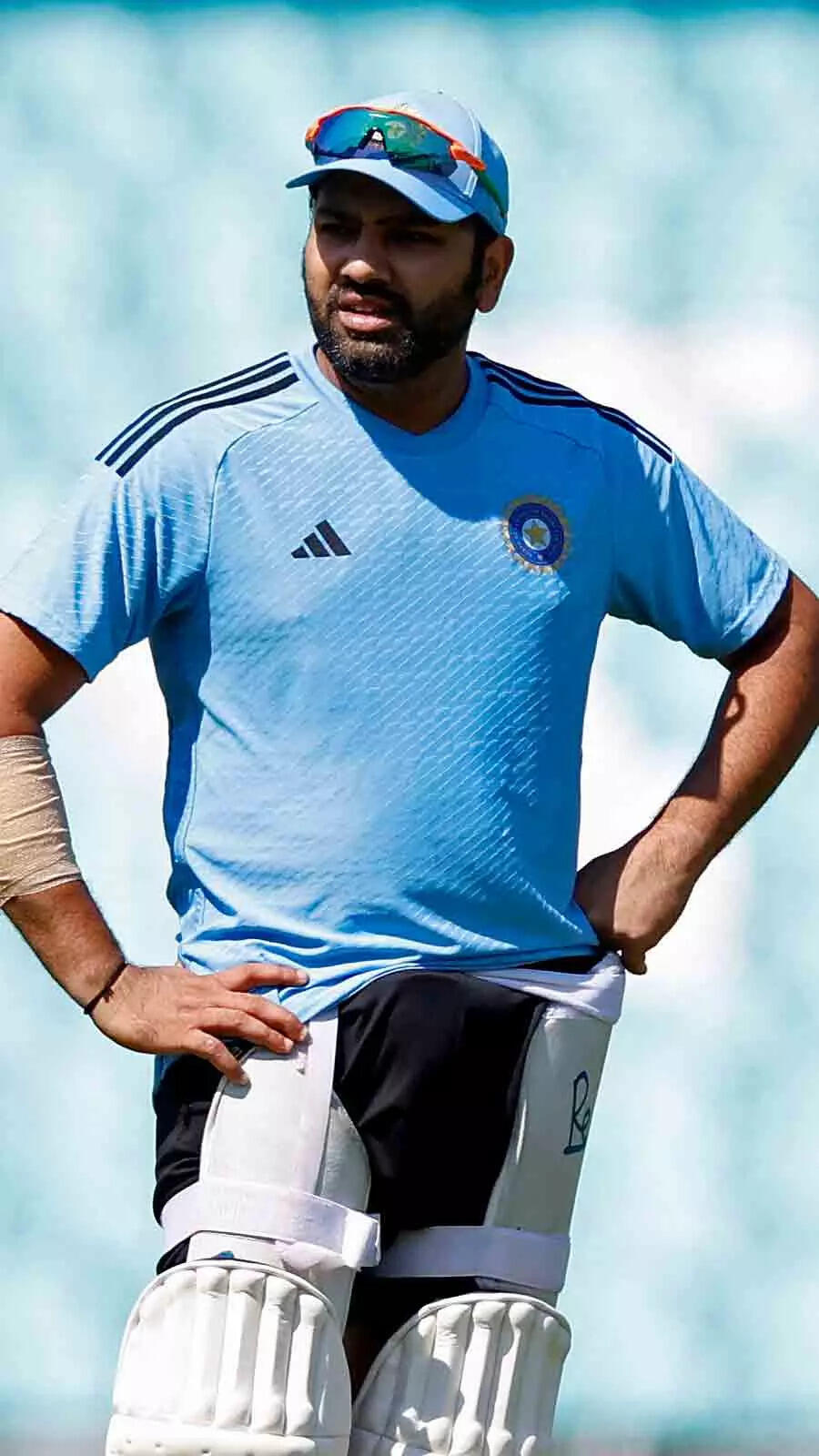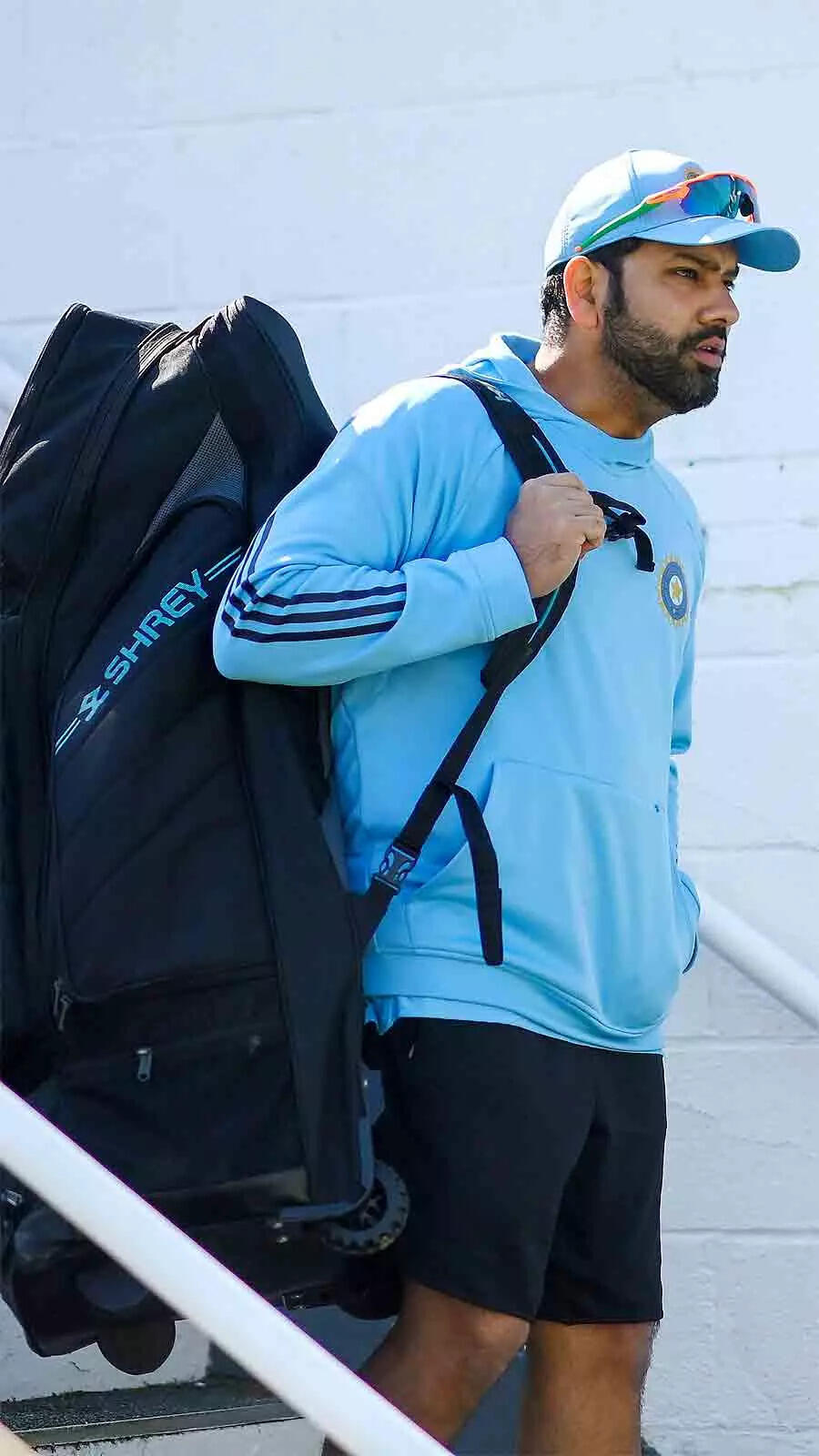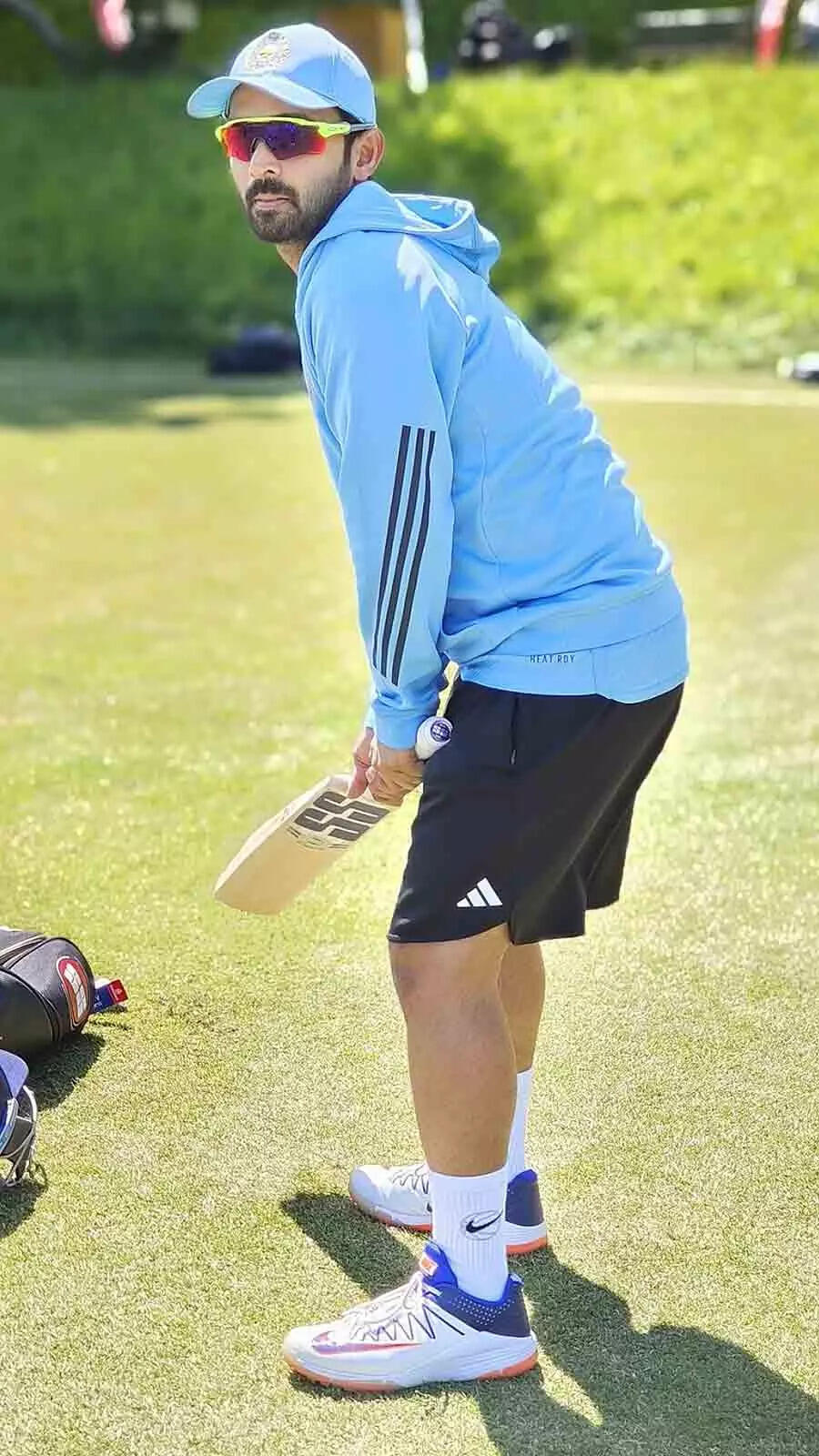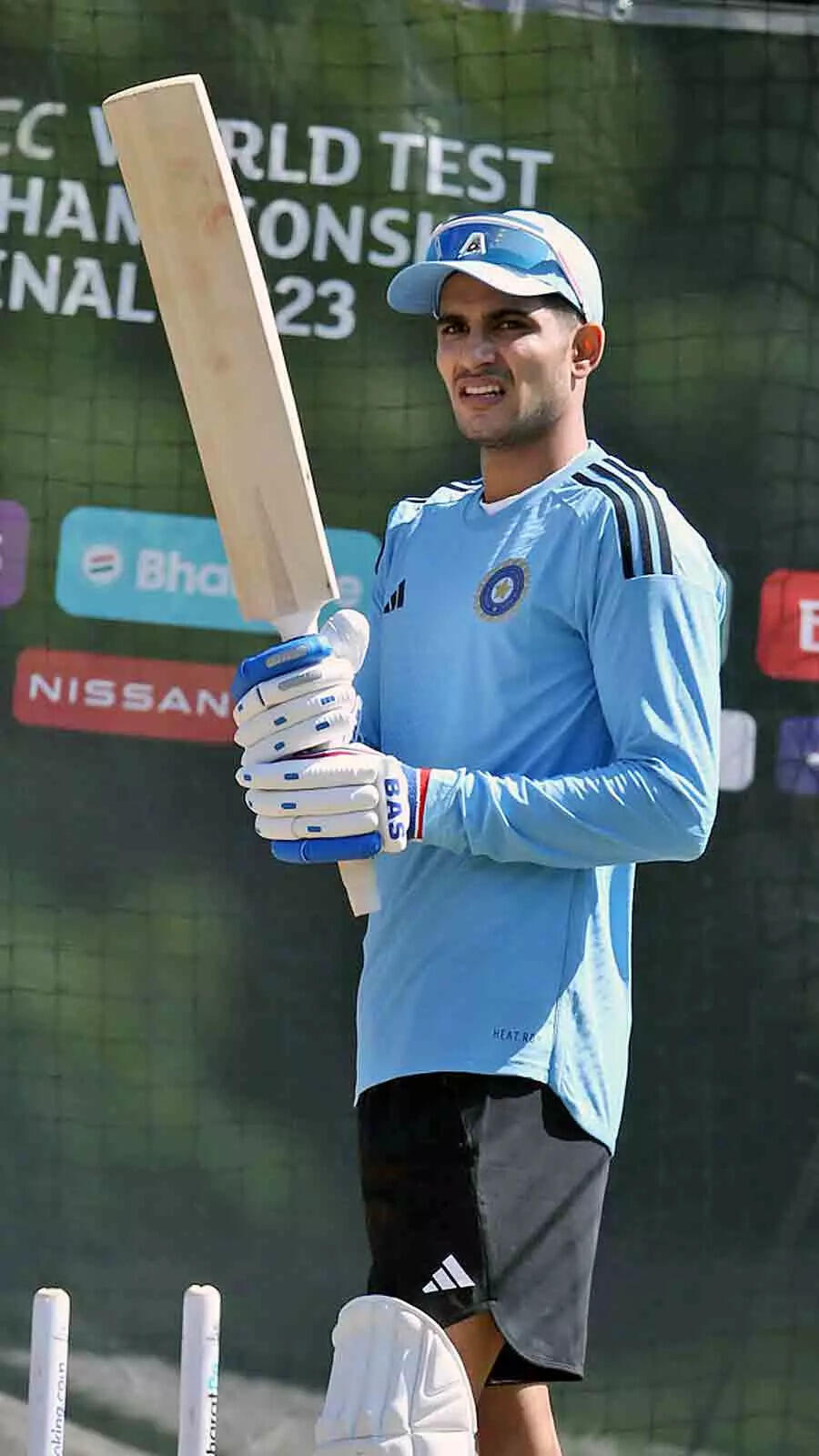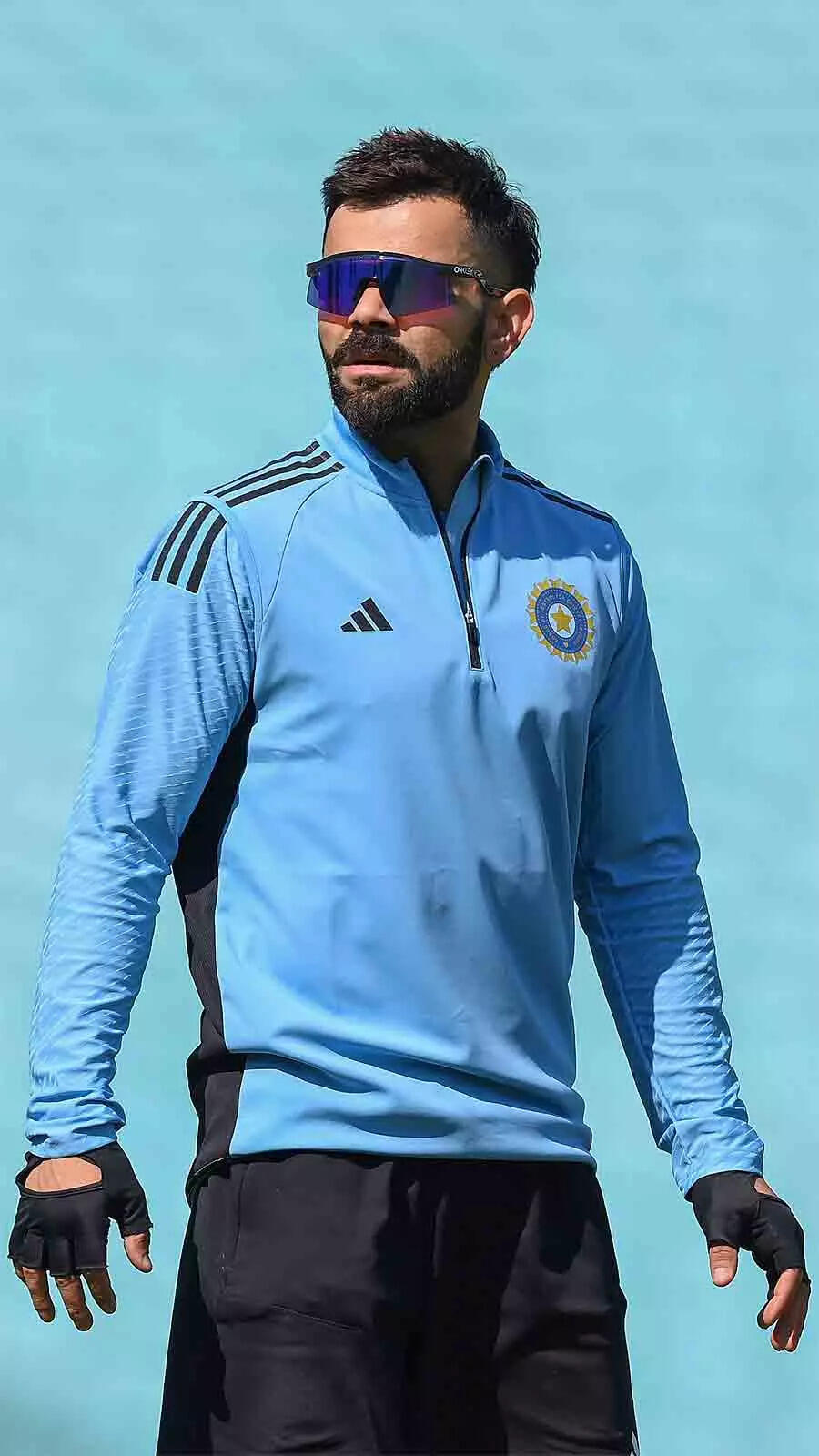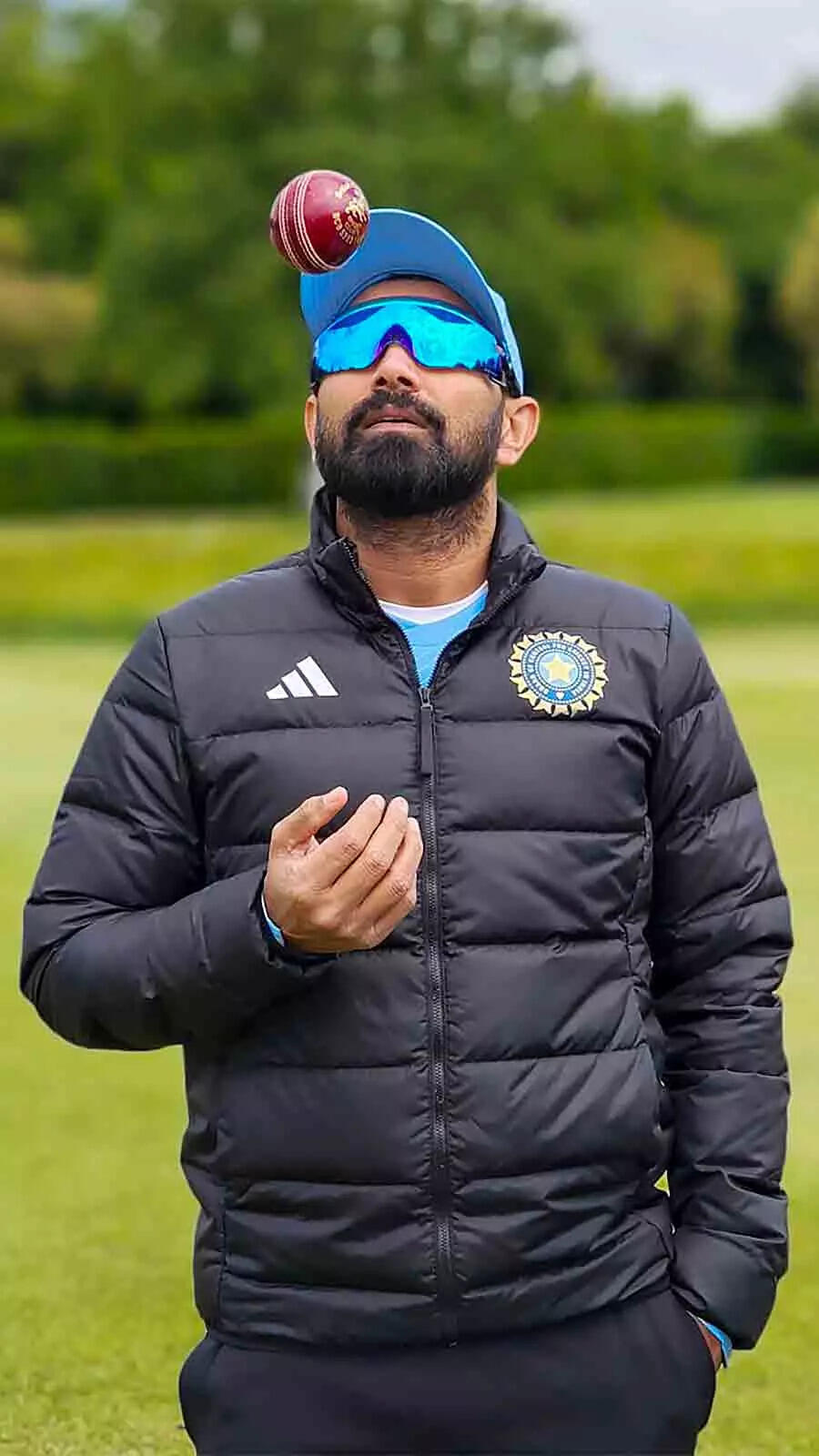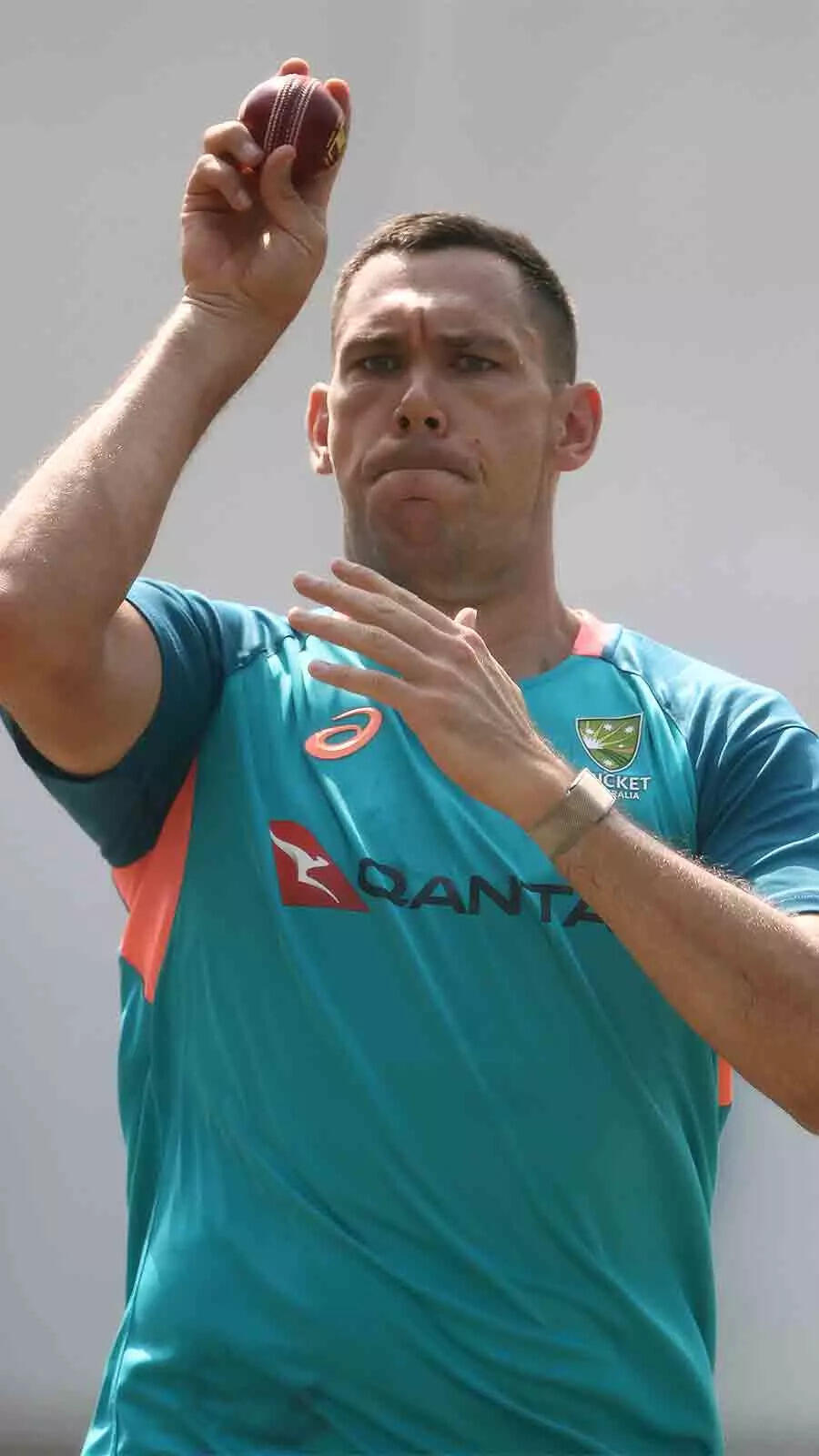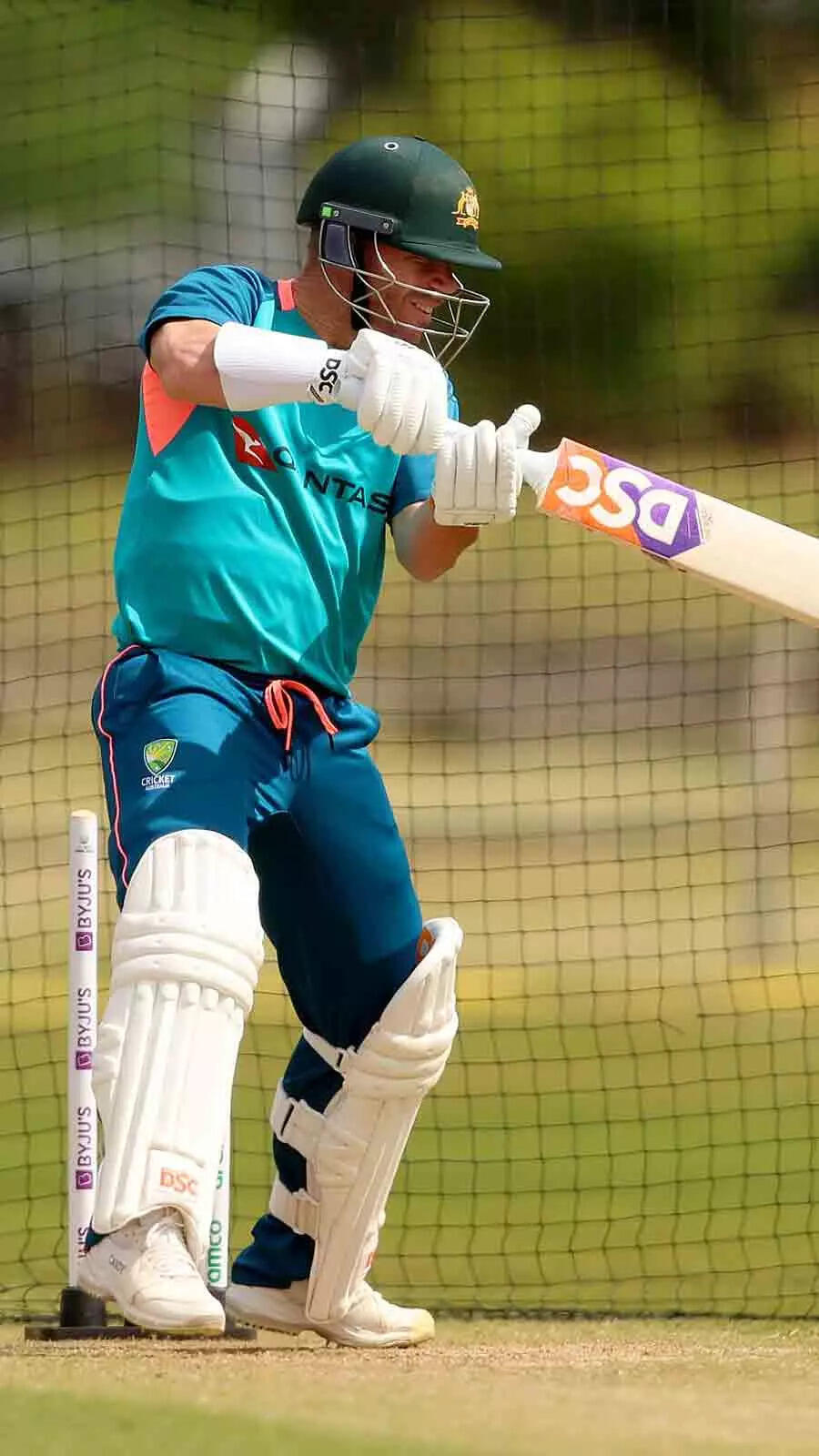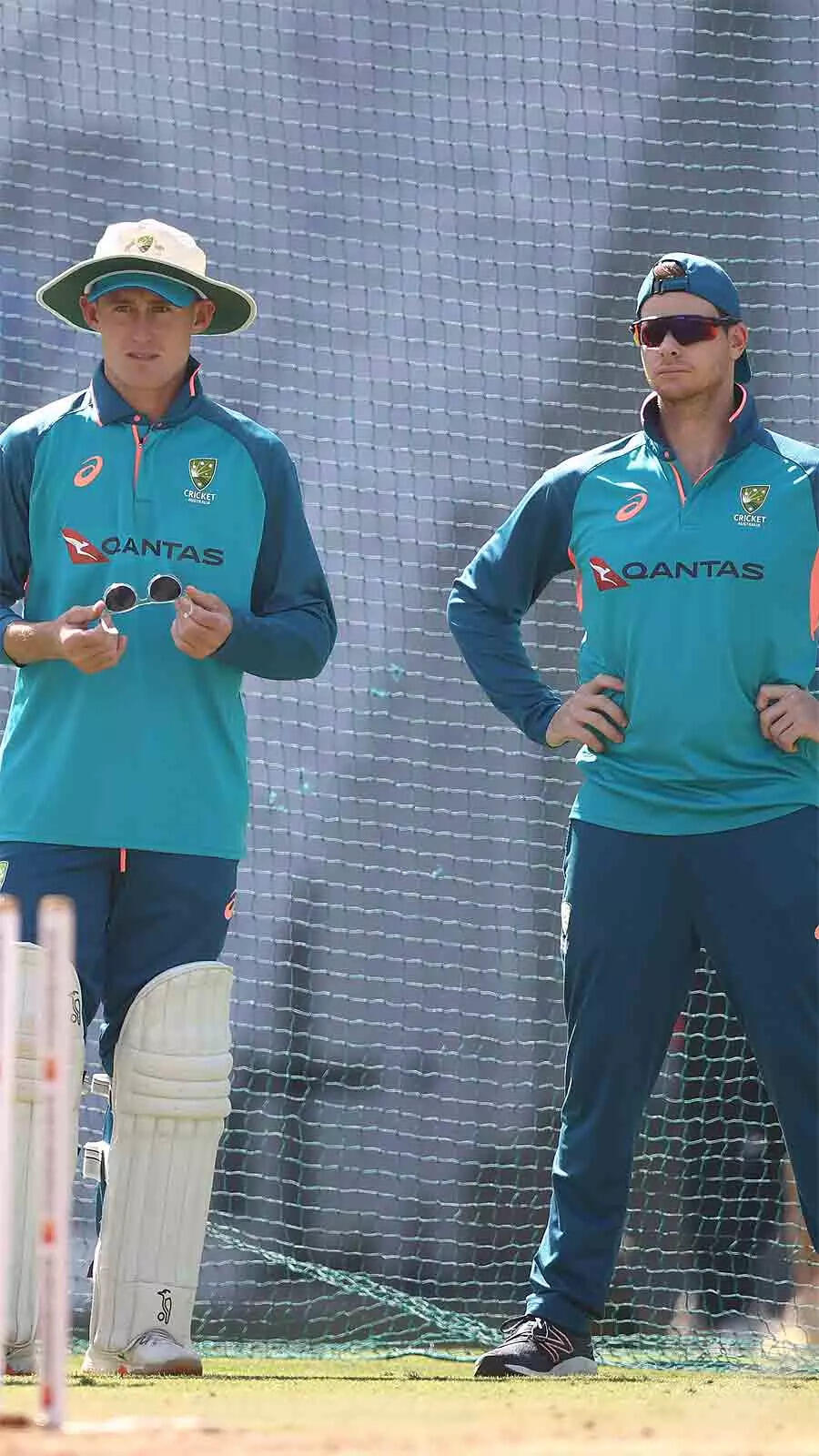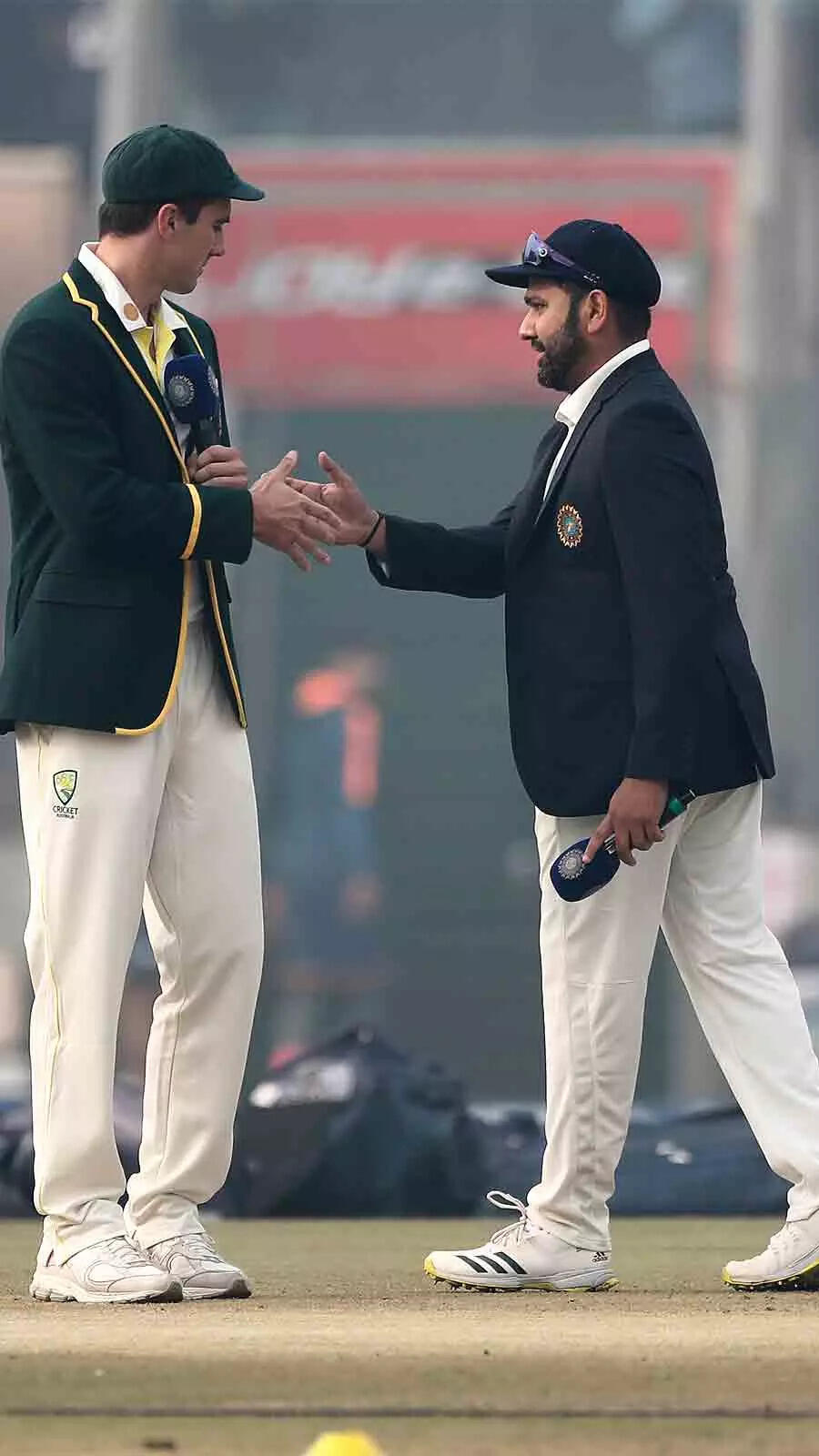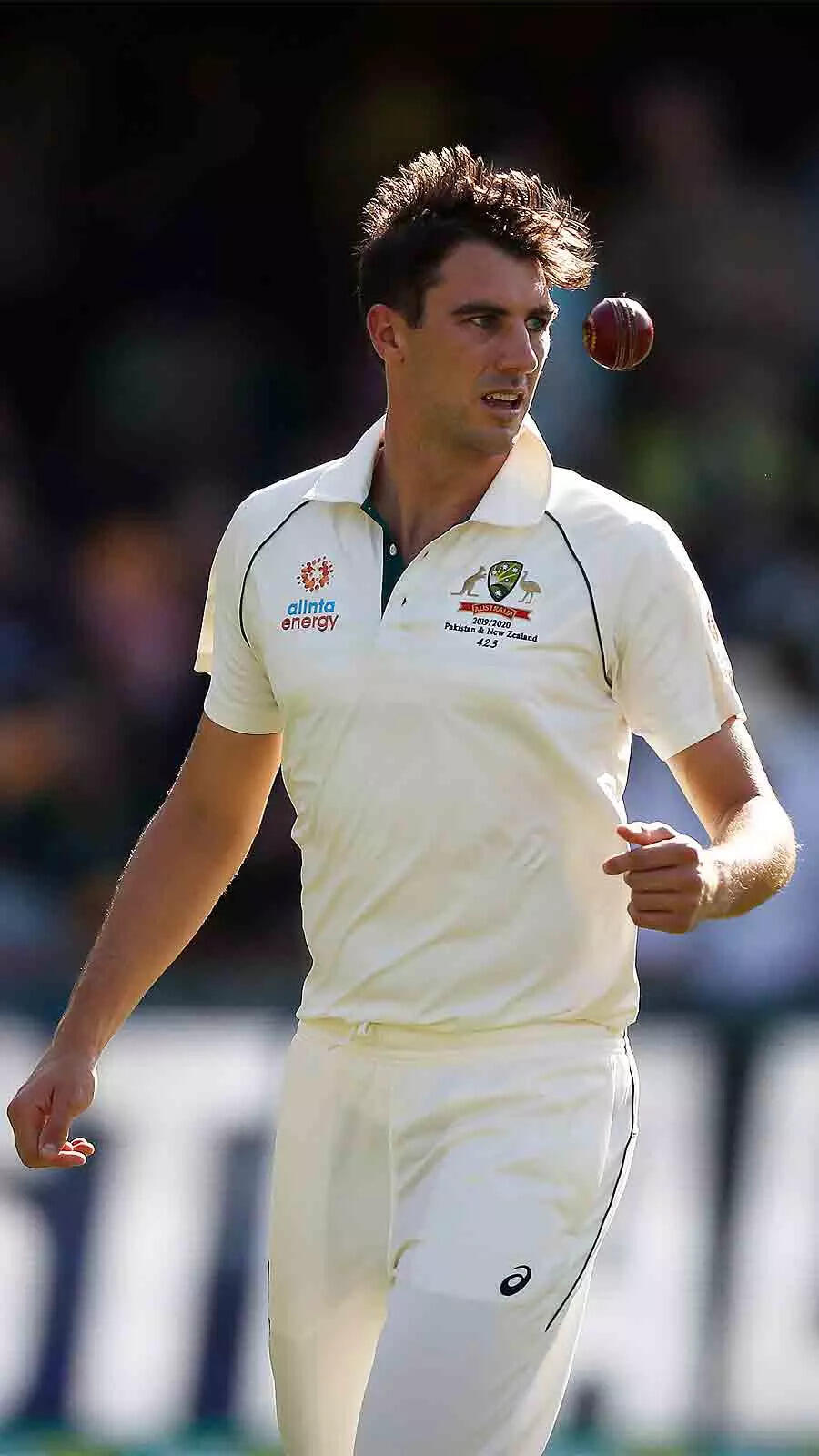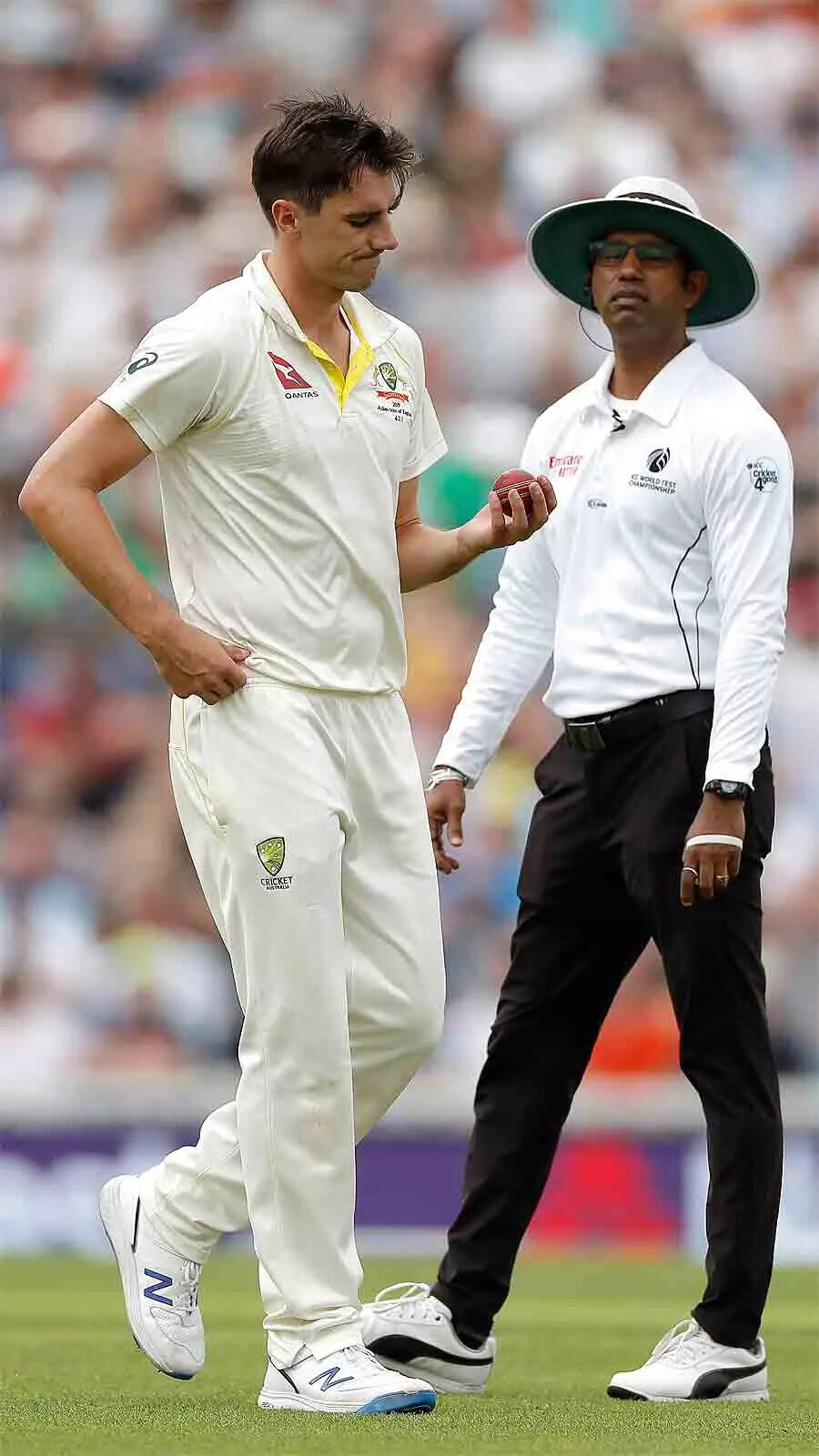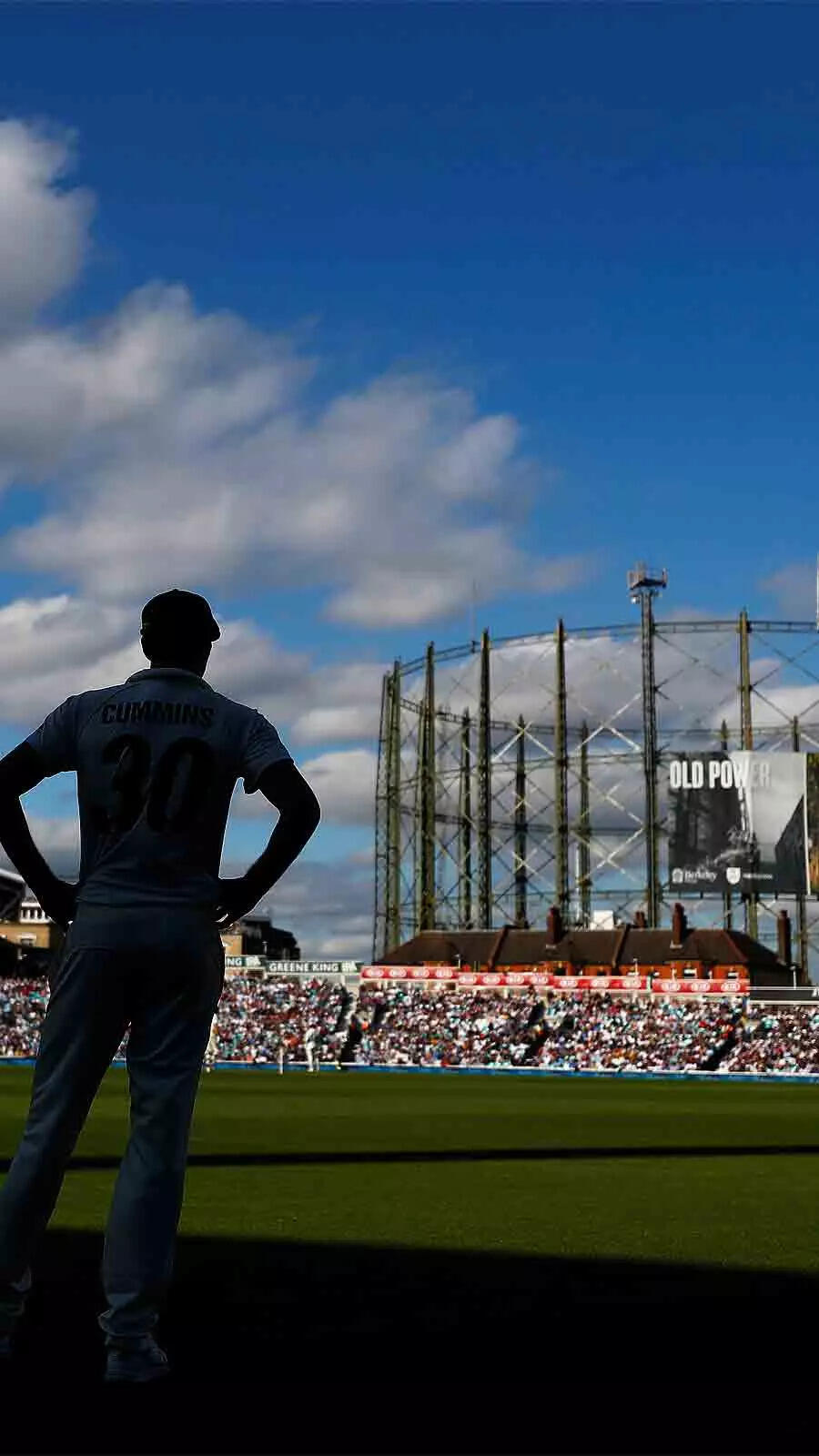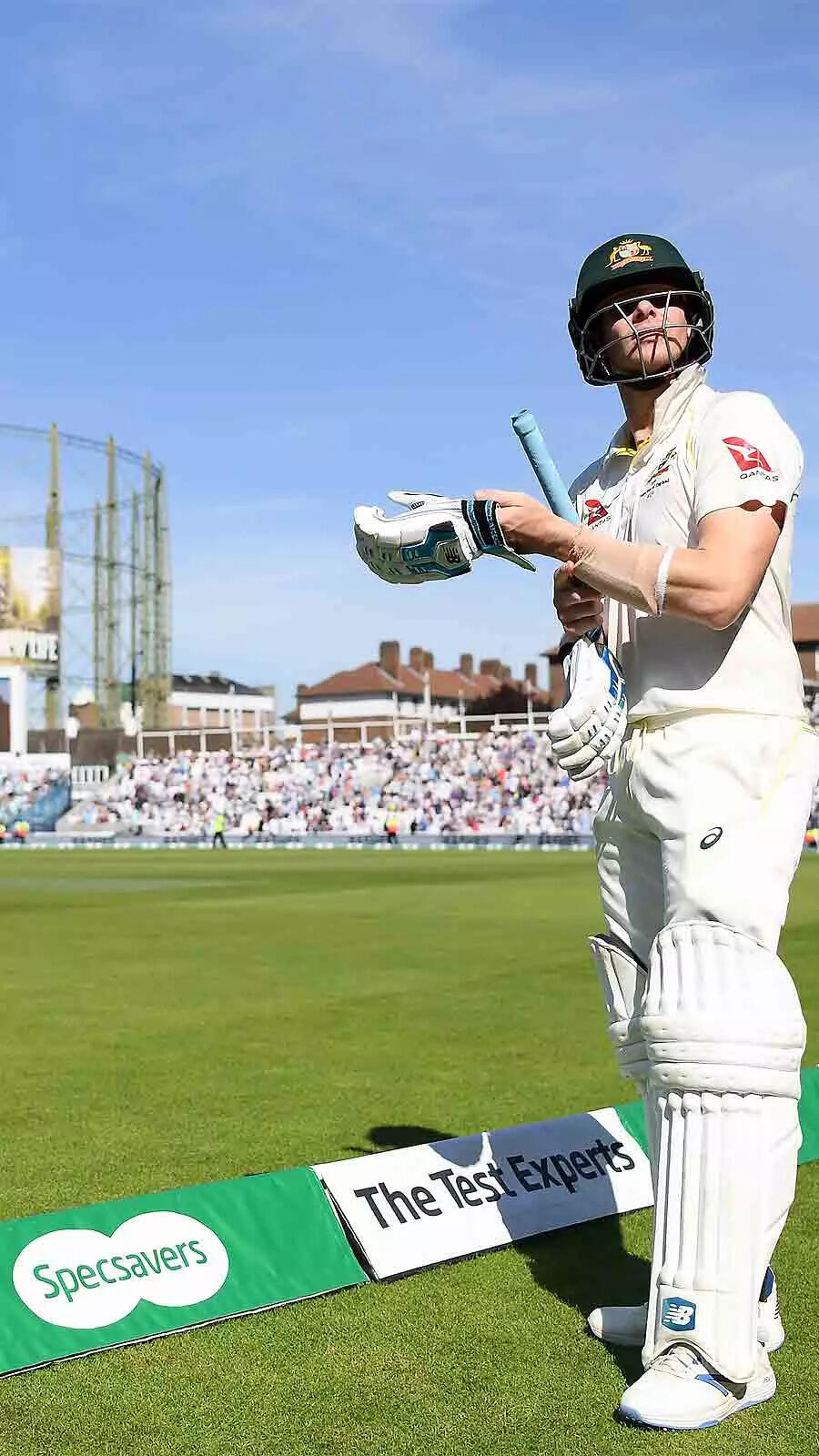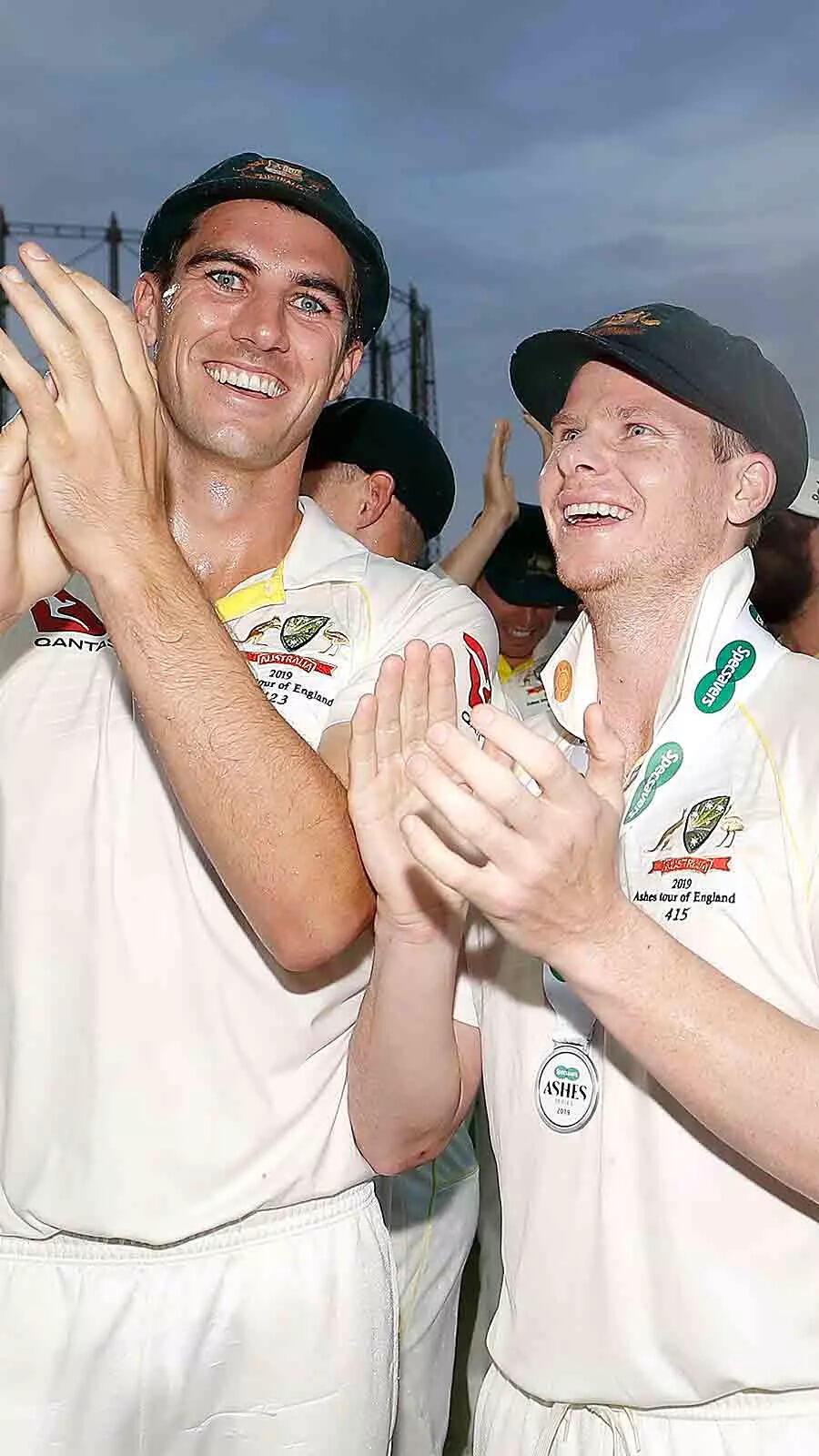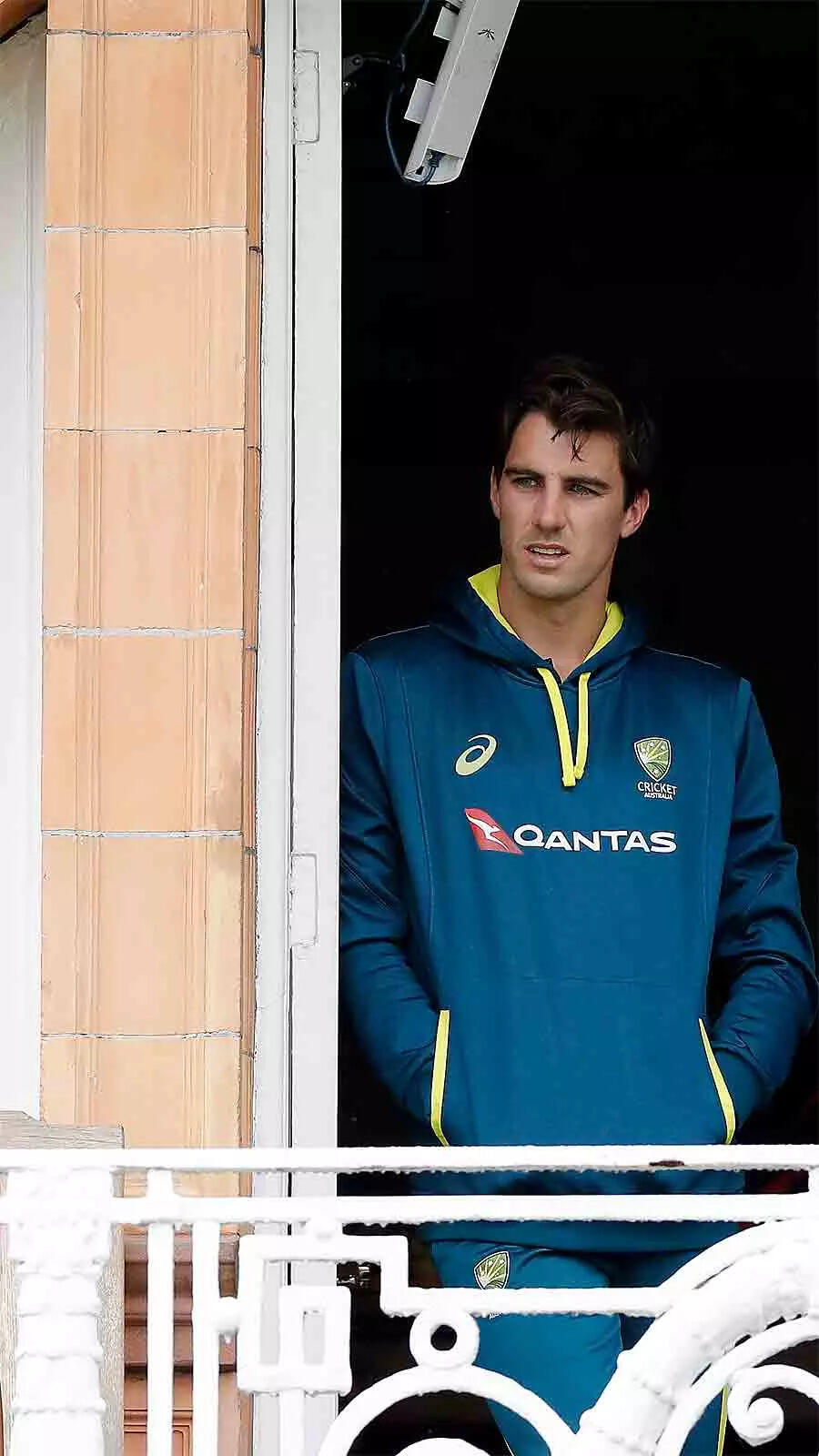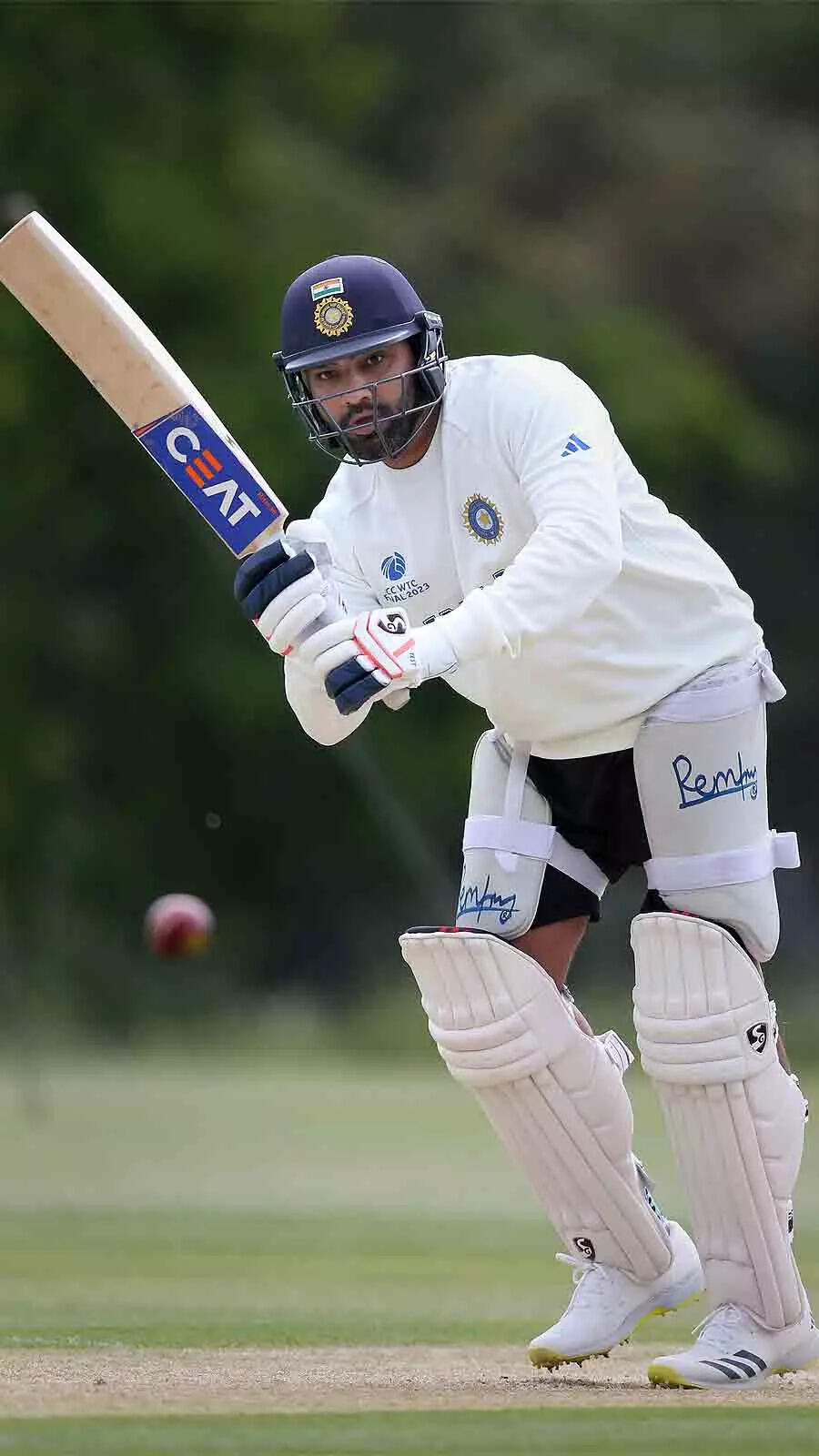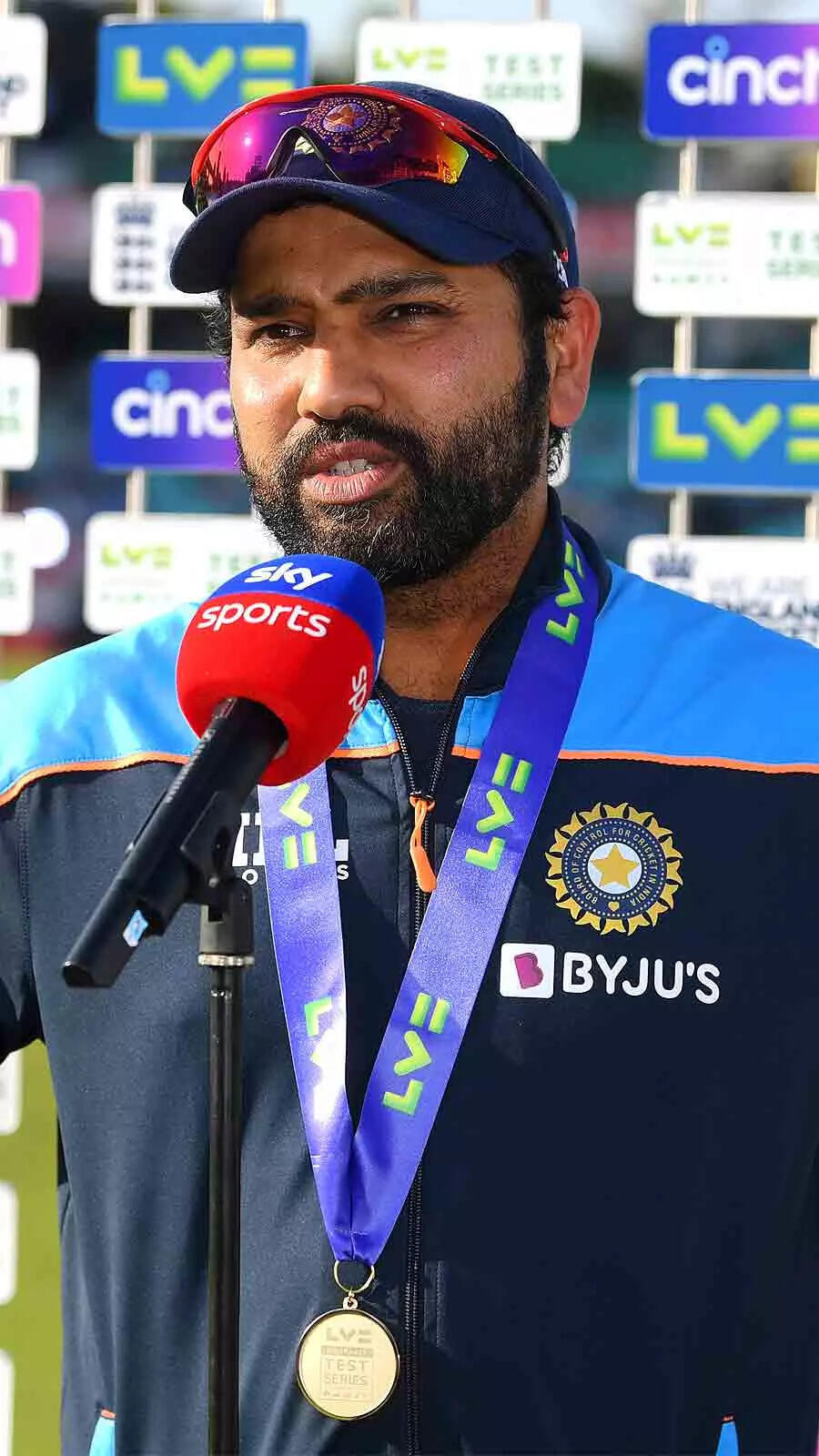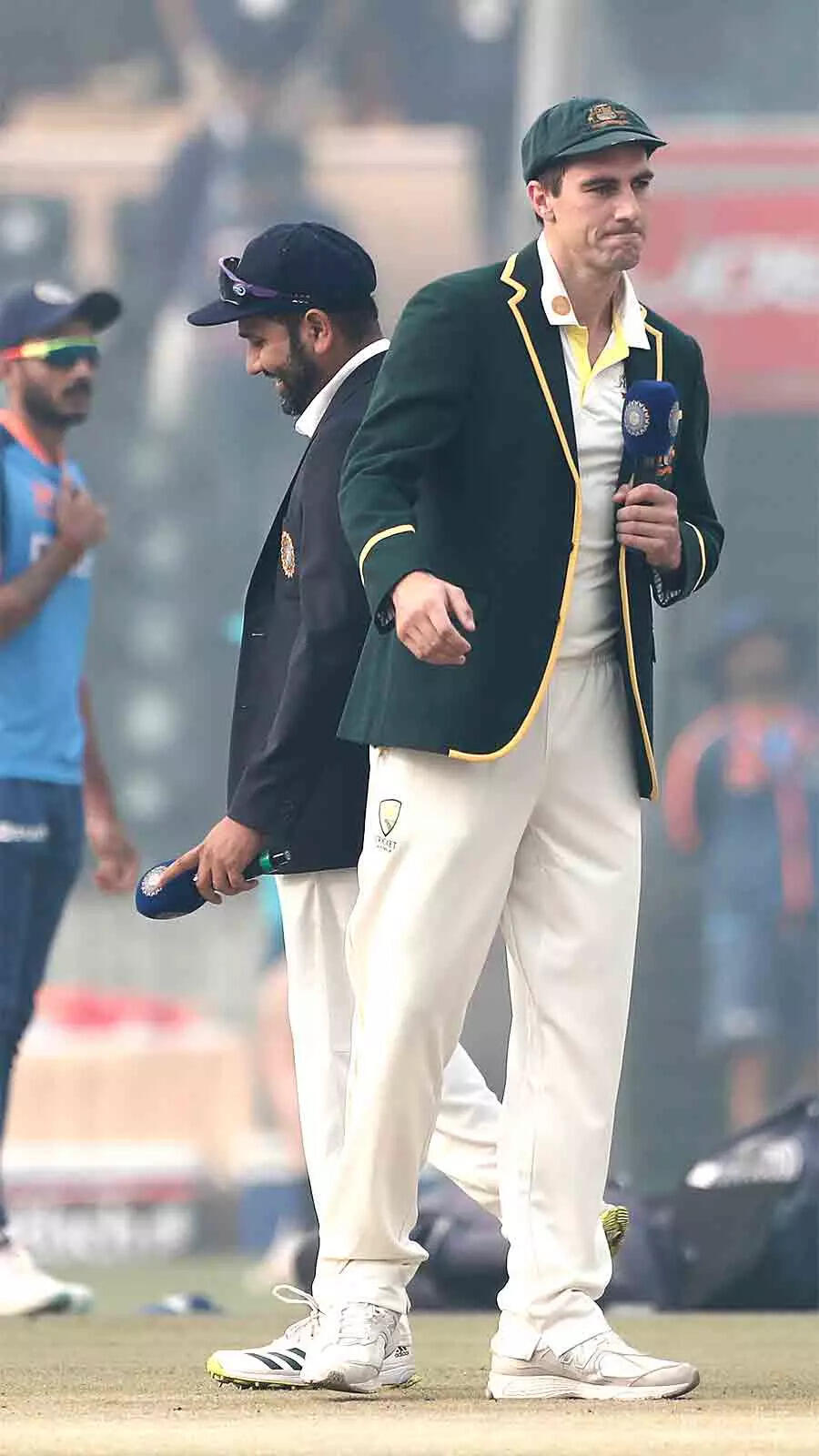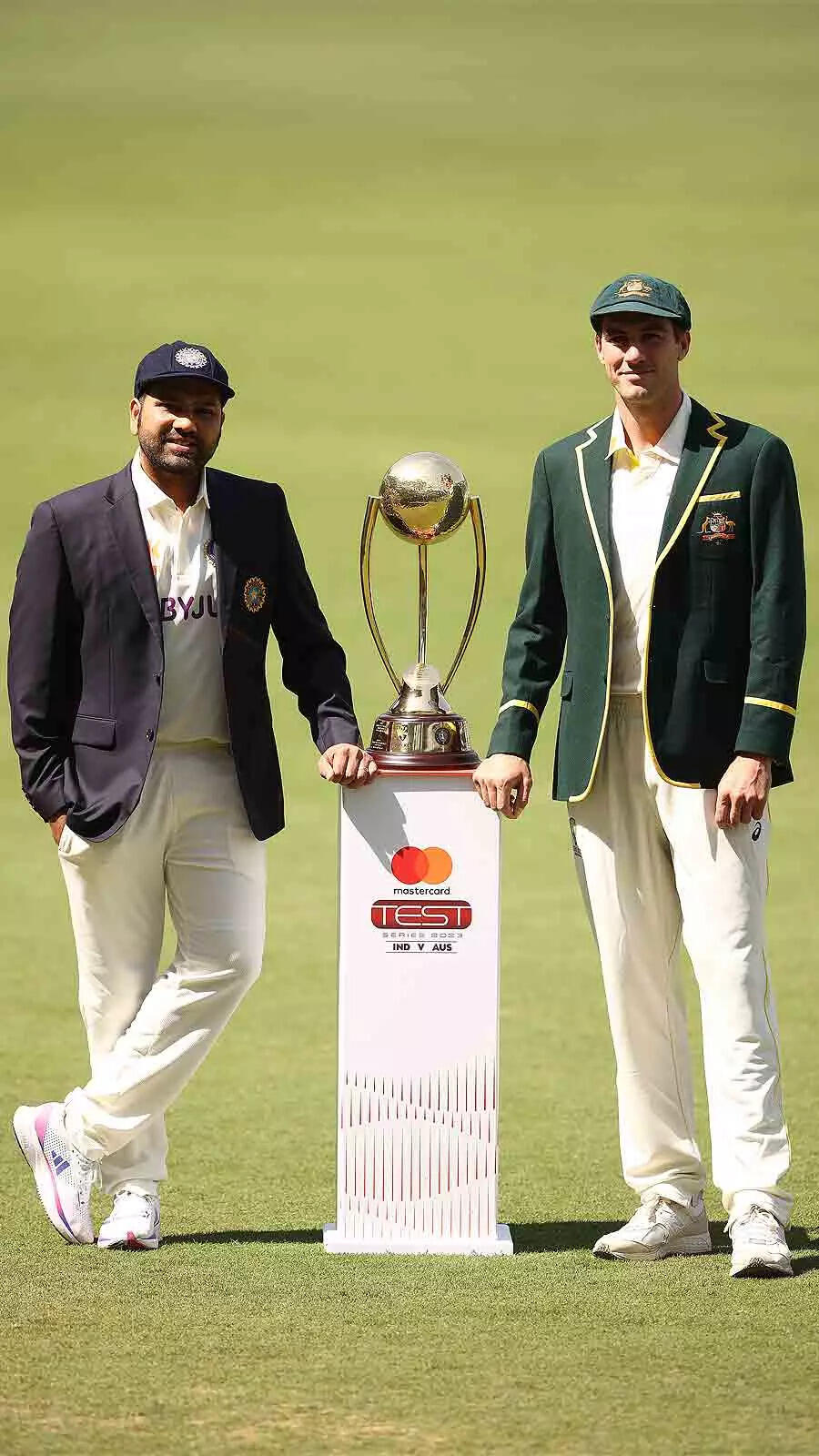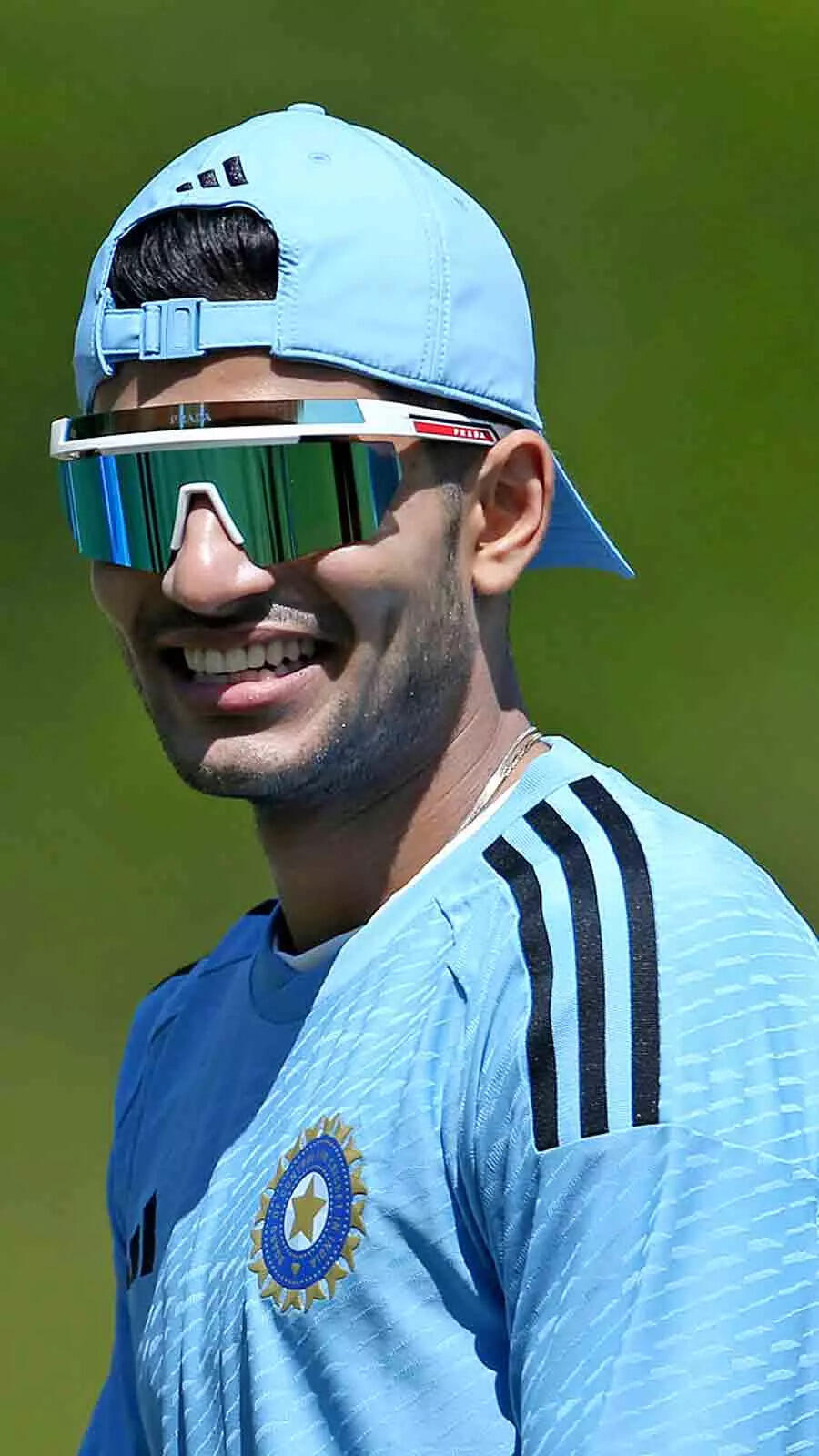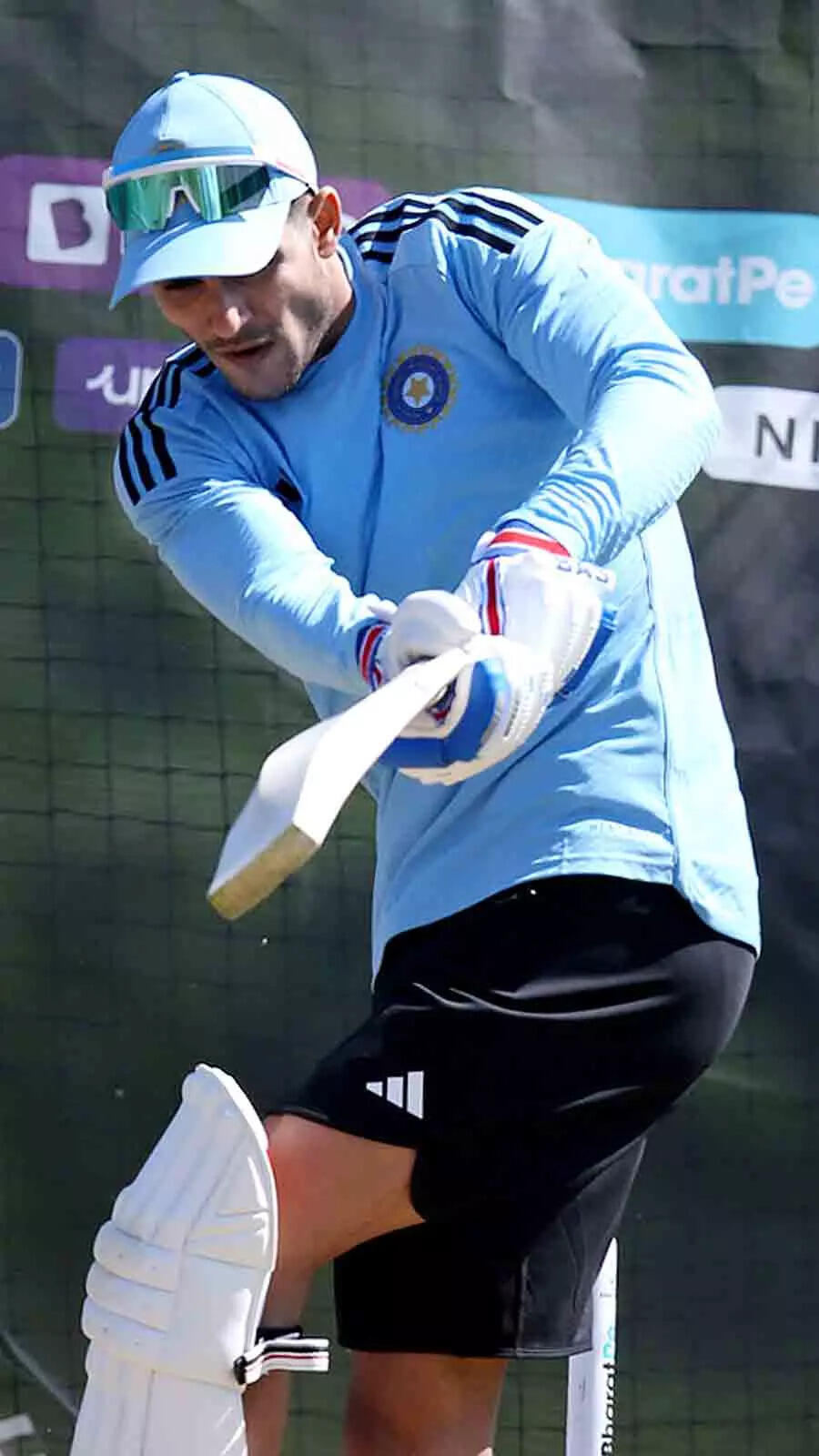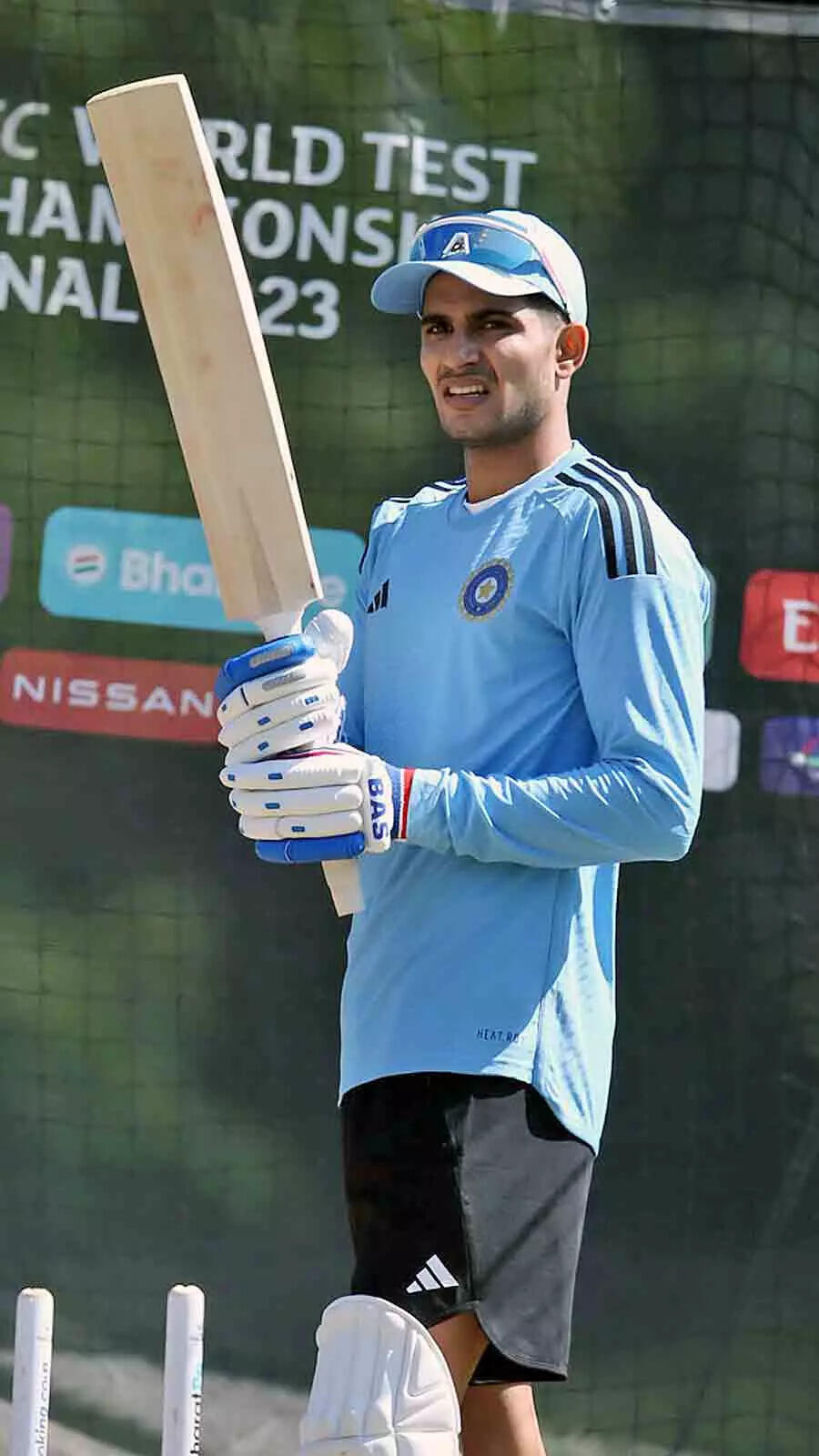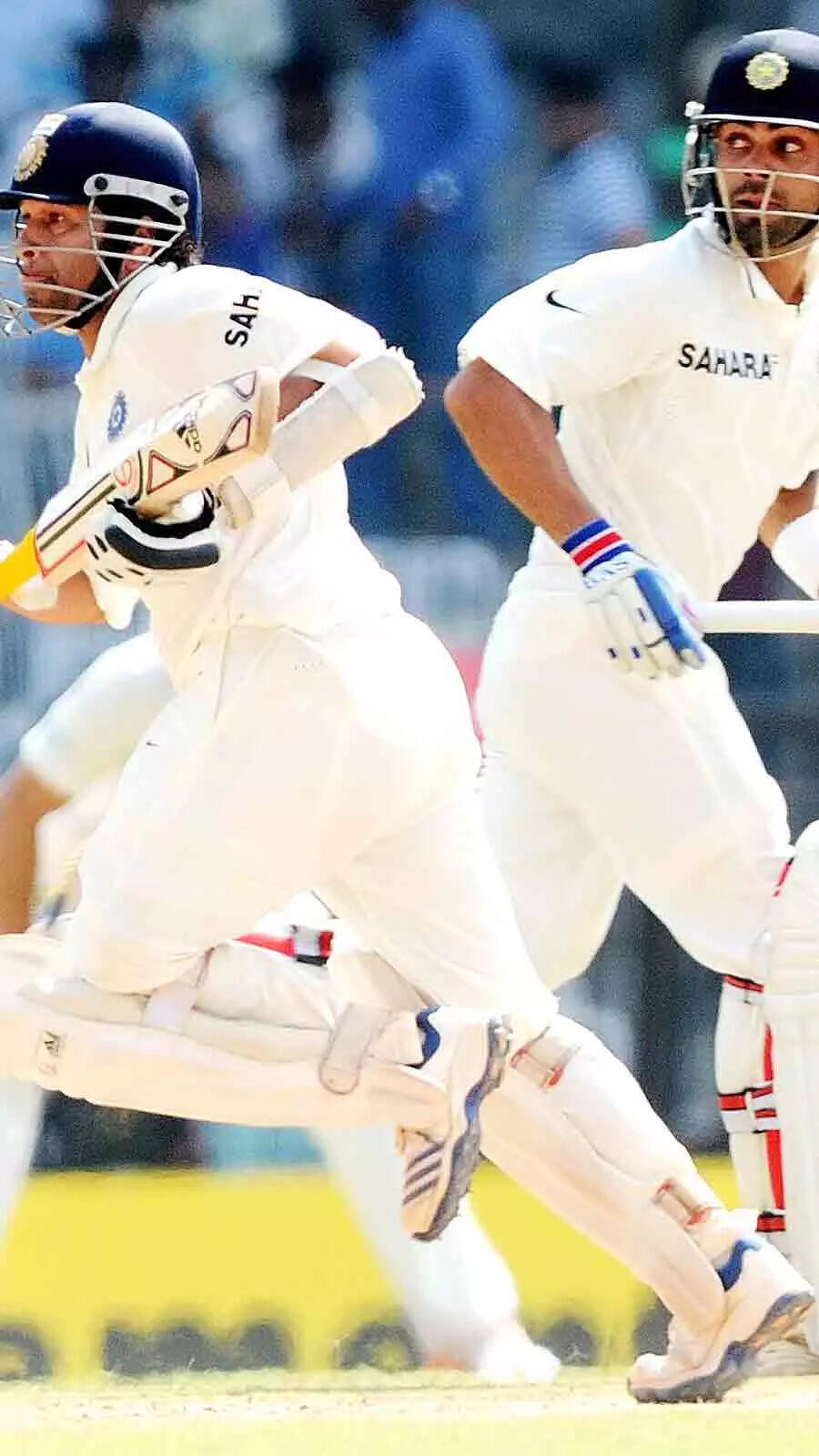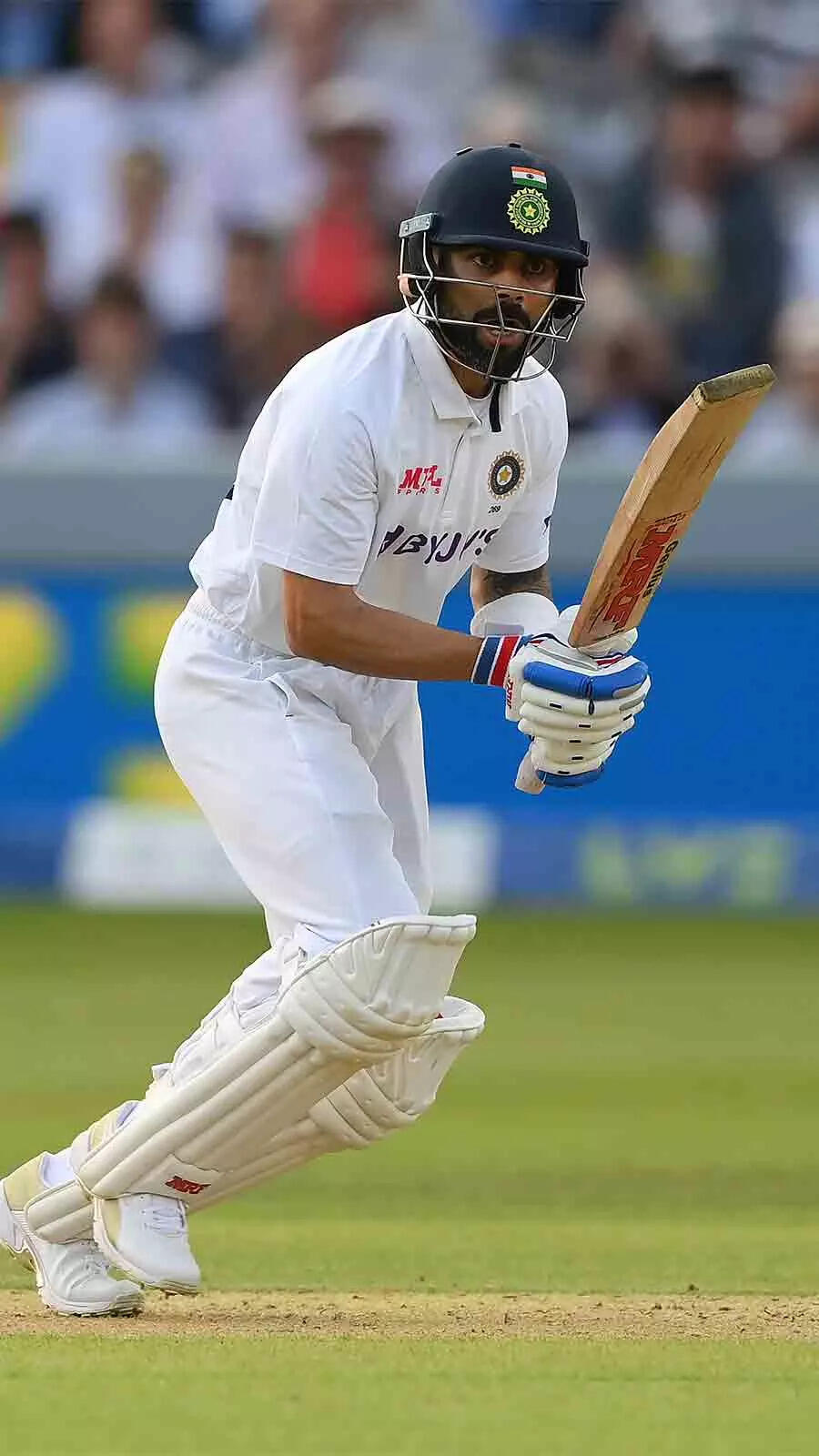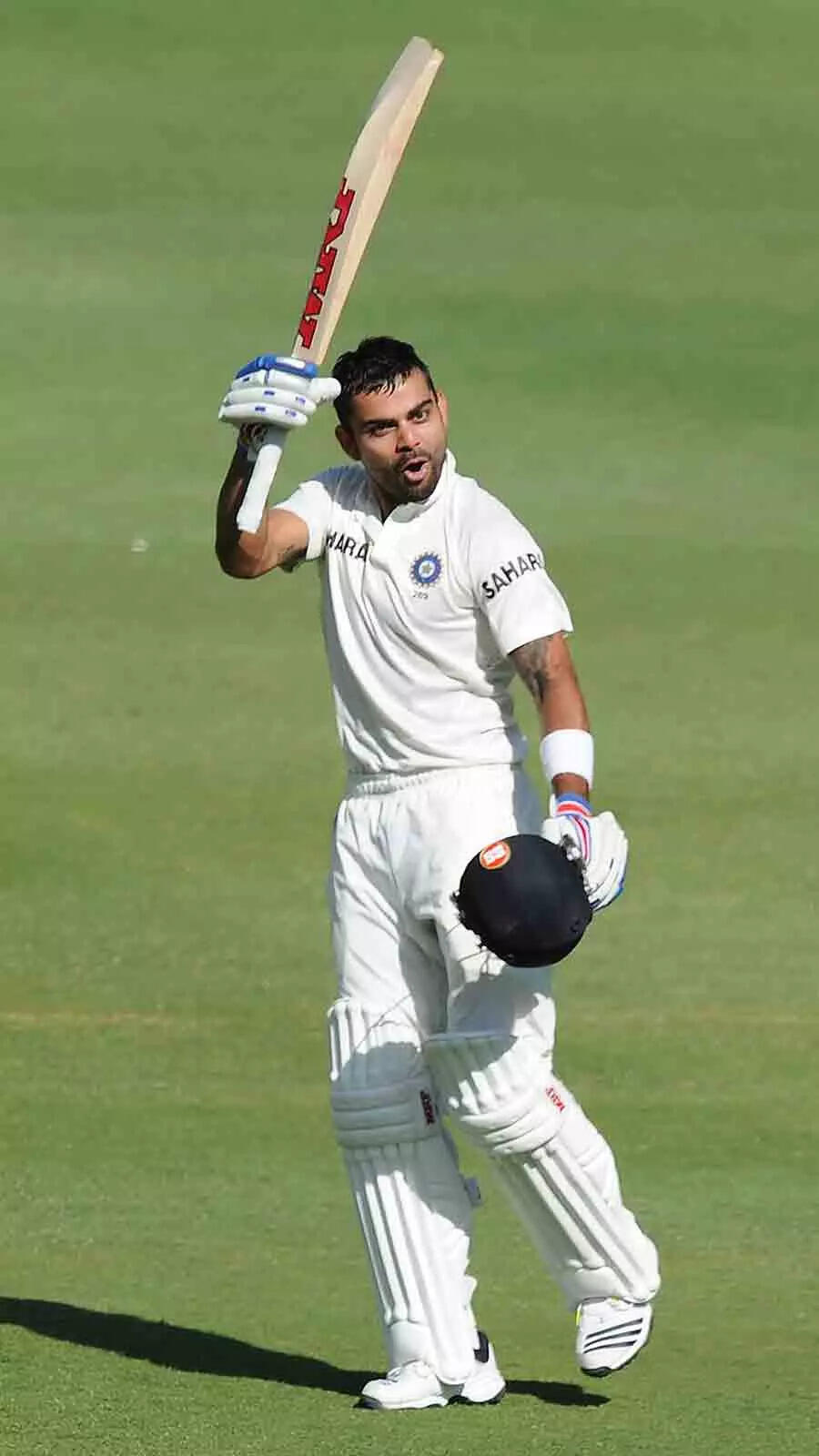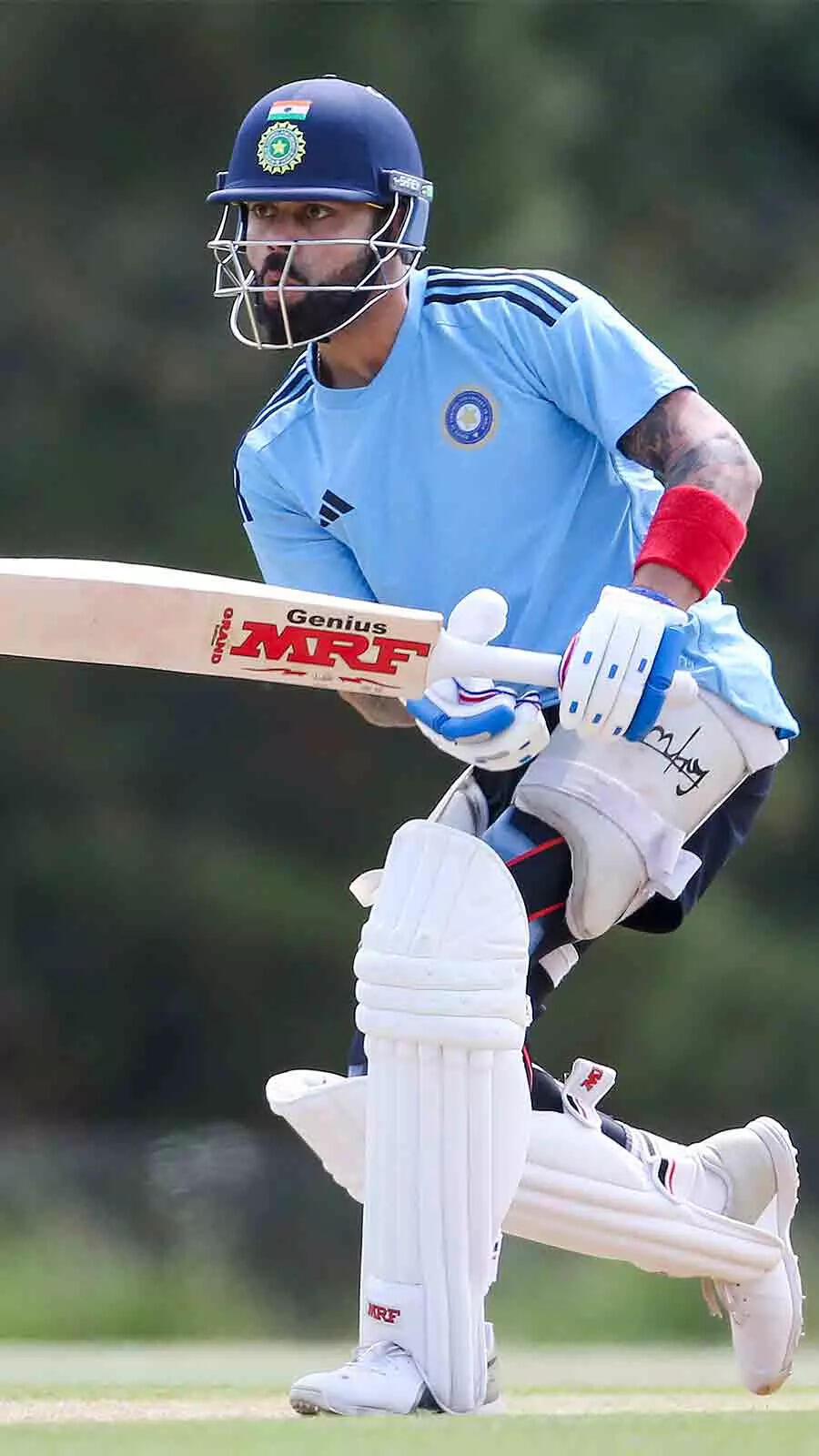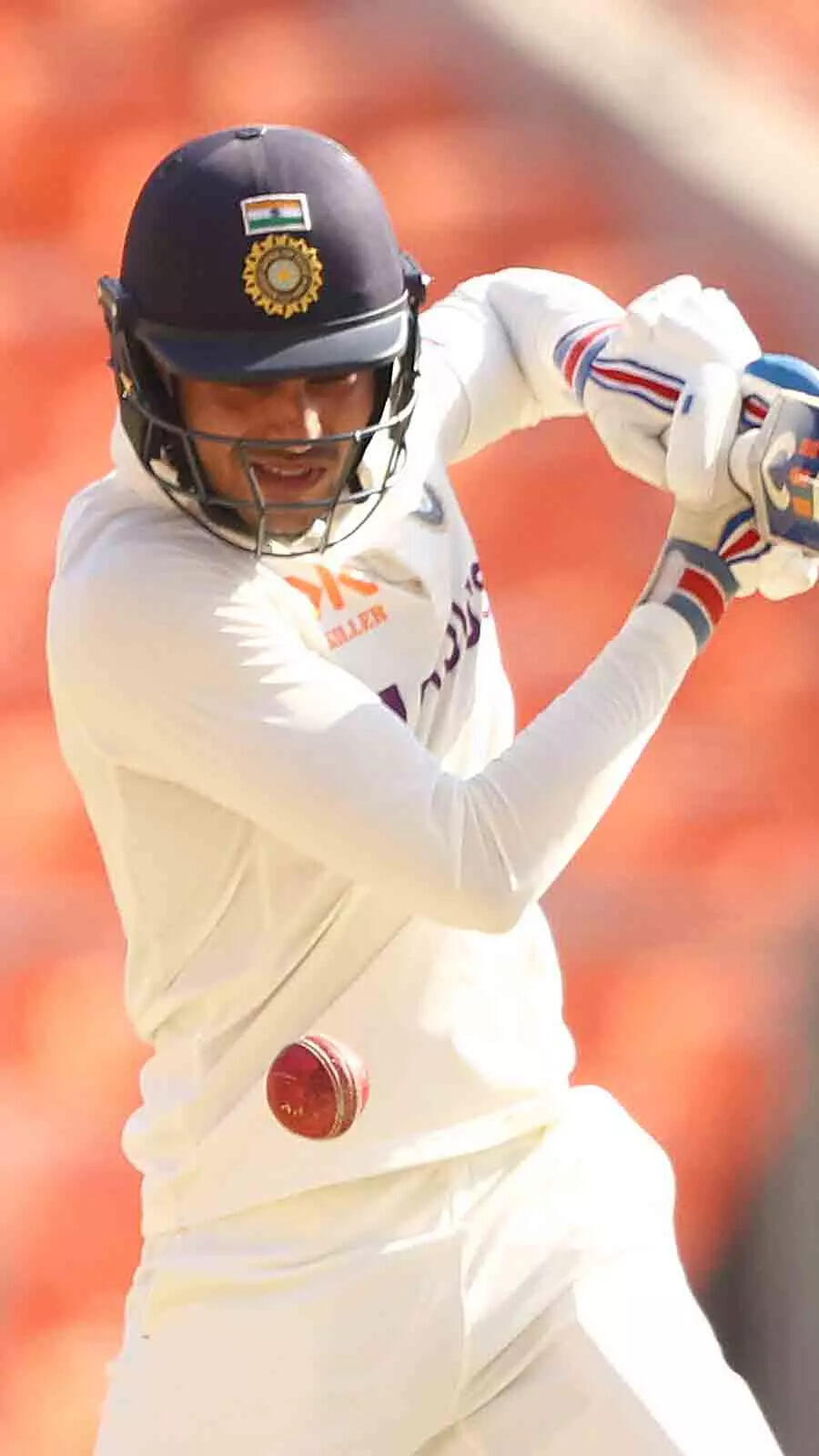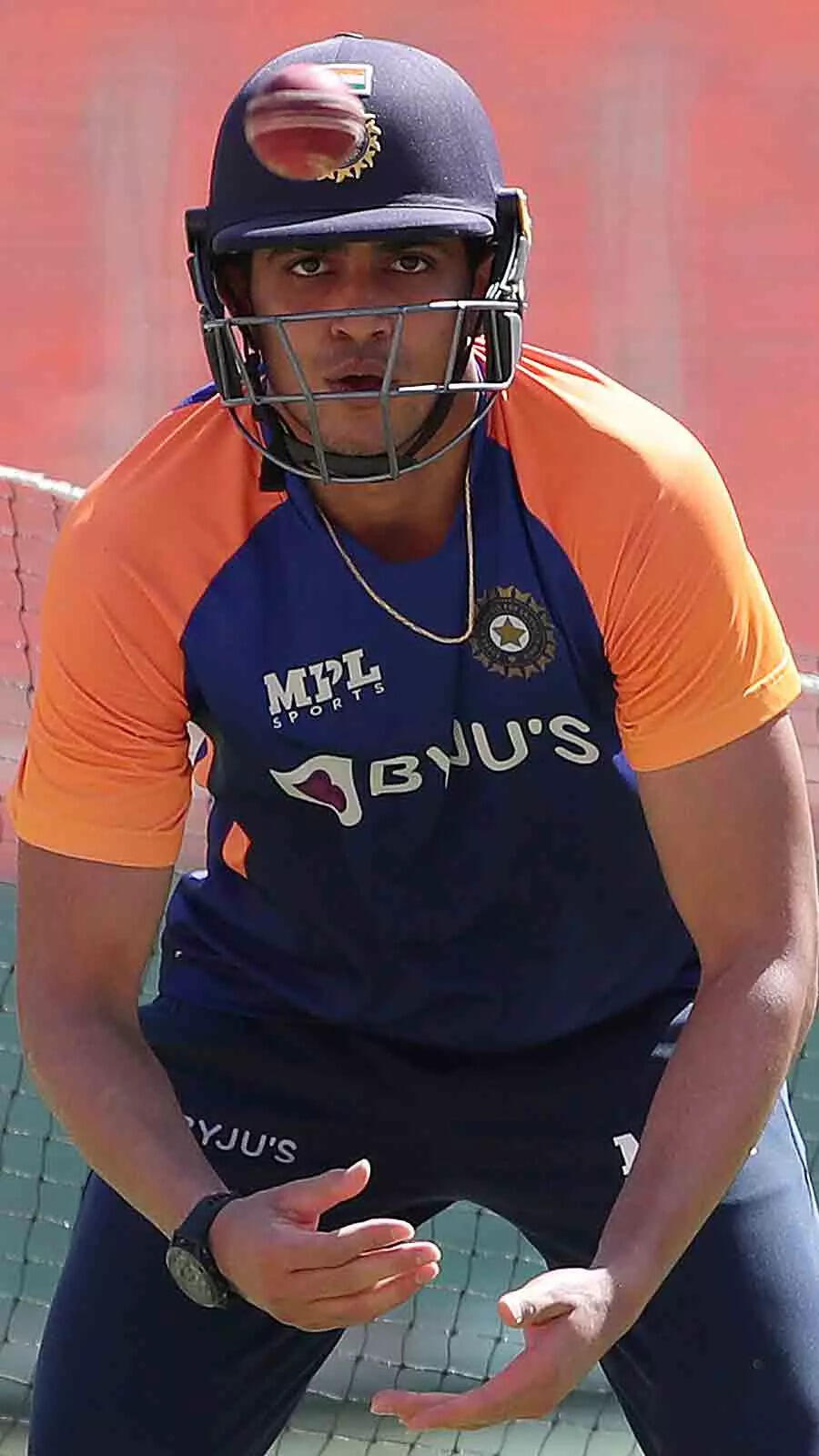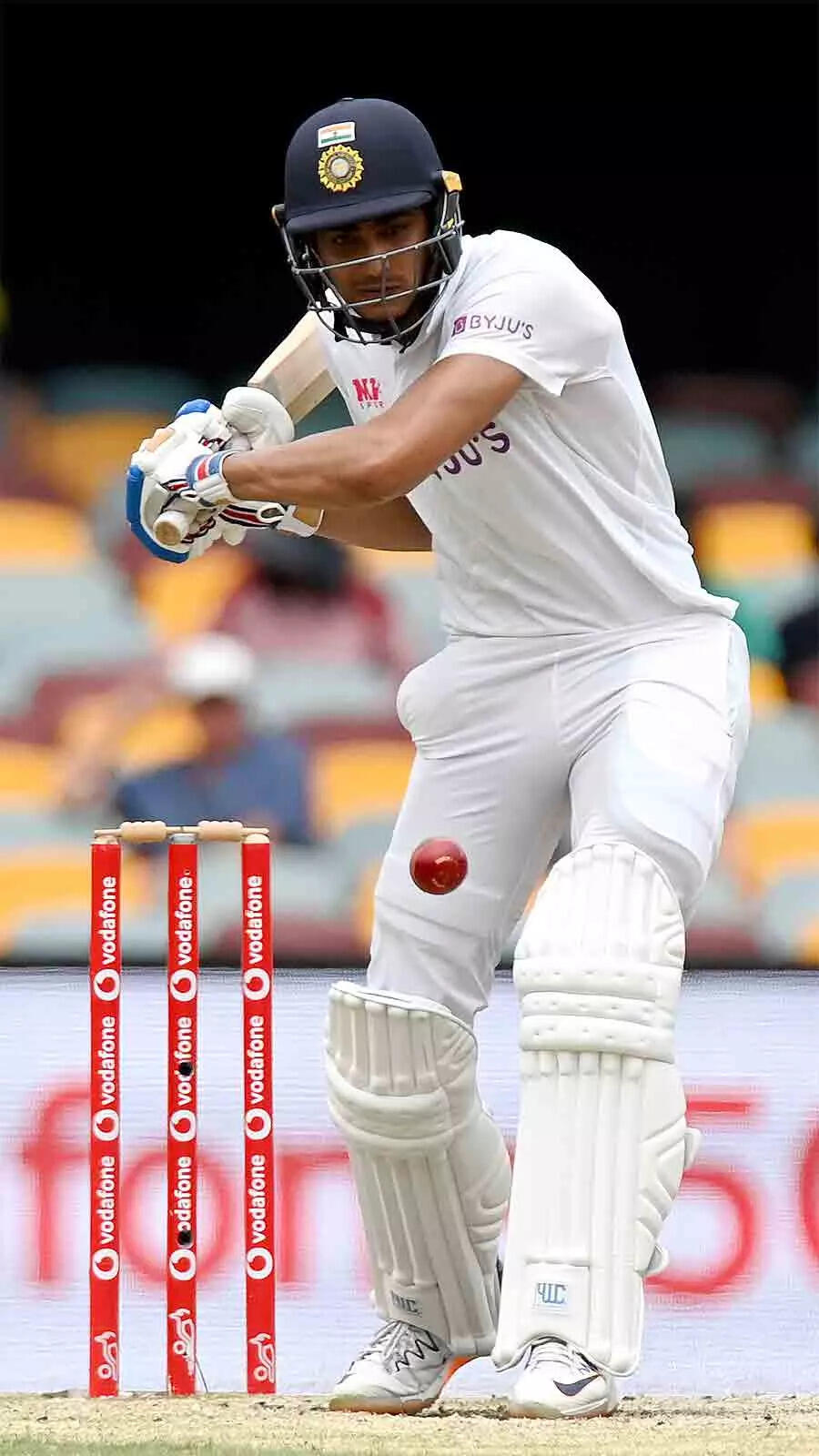- News
- Sports News
- Cricket News
- ICC world test championship News
- India vs Australia: Where the WTC final will be won or lost
Trending Topics
India vs Australia: Where the WTC final will be won or lost
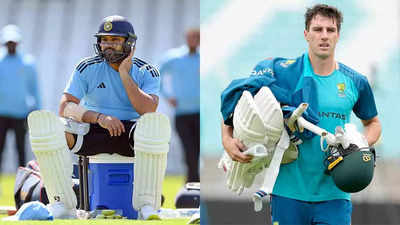
Rohit Sharma and Pat Cummins
India dominated the recent Border-Gavaskar Trophy series at home against Australia, riding on some spectacular performances from spin twins Ravichandran Ashwin and Ravindra Jadeja, who collectively picked up 47 wickets. The World Test Championship final at the Oval, beginning on Wednesday, will however be a different ball game.
TOI takes a tactical look at the India-Australia Test at The Oval...
India and Australia are going to lock horns in the much-anticipated World Test Championship final, starting Wednesday at The Oval. While Australia has reached the final for the first time, India made it to the summit clash in the 2021 edition but lost to New Zealand by eight wickets.

Both teams recently faced each other in the Border Gavaskar Trophy in India and the hosts dominated the series, riding on some spectacular performances from spin twins Ravichandran Ashwin and Ravindra Jadeja. The duo collectively picked up 47 wickets. The WTC final, however, is going to be a different ball game. TOI takes a look at the tactics on which the outcome of the final will depend.

How Indian openers counter the new ball
A good opening partnership was the catalyst in India dominating the first four Tests of the 2021-22 Test series in England. During that time, the openers KL Rahul and Rohit Sharma scored big runs. Both scored match-winning hundreds - Rahul in the second Test at Lord's and Rohit in the fourth Test at The Oval. Rohit scored 368 runs in the first four Tests at an average of 52.57 with one hundred and two half-centuries. Rahul was not far behind and ended with 315 runs from the four Tests at an average of 39.37.

With Rahul injured, Shubman Gill is set to open in the WTC final alongside Rohit. Gill has been in stellar form across international formats in 2023 and also the recently-concluded IPL. But playing the Australian new ball attack comprising Mitchell Starc, Pat Cummins and Scott Boland on seamer-friendly conditions will be a totally different ball game.

In all likelihood, it will be a fresh pitch with the surface being dry at The Oval - the venue for the WTC final. In such conditions, both Gill and Rohit have to ensure the Aussies don't get a flurry of wickets with the new ball. A decent enough start will go a long way in India getting the initial advantage.

Ashwin against the Australian southpaws
Ravichandran Ashwin and his success rate against left-handed batters is just out of this world. Ashwin holds the record of dismissing the most number of left-handed batters in Test cricket. In 92 Tests so far, Ashwin has scalped 474 wickets out of which 241 are lefties - a success percentage of 50.84 percent. James Anderson, who is second on the list of bowlers with most left-handed victims, has 212 wickets to his credit and a 30.95 percent victim ratio.
Interestingly, Australia has five southpaws in their most likely playing XI. Right from openers David Warner and Usman Khawaja to Travis Head and wicketkeeper-bat Alex Carey and in the lower-order Mitchell Starc, Ashwin will have a buffet of southpaws to feast on. Even based on recent form, Ashwin has had the wood on the Aussies - especially their left-handers.
When Australia travelled to India earlier this year for the Border Gavaskar Trophy, Ashwin claimed 25 wickets in four Tests at an average of 17.28 and a strike-rate of 39.9. Out of the 25 victims, 15 were left-handers. It's a no-brainer that against five left-handers of the opposition, Ashwin will be India's trump card.
Playing their own brand of cricket
With the advent of 'Bazball', England have gone the ultra-aggressive approach in Test cricket. It has worked for the English team so far. The Australians, too, play with an aggressive bent of mind - whether it is with the bat or the ball. In non-subcontinental conditions, Australian batters easily maintain a run-rate of 4-4.5 runs per over. They try to push the game ahead. For India, both bowlers as well as batters, the challenge will be to dictate the pace of the final while playing their own brand of cricket.
By going the English or Aussie way, the Indian team will dig their own grave. The challenge will be to ensure the match goes till the fifth day and it doesn't move at such a frenetic pace that everything is over within three days - something the Aussies relish upon. Therefore, the bowlers will have to ensure that while going for wickets, the opposition run-rate doesn't go through the roof.
Tight bowling, keeping a check on the Australian run-rate will automatically result in wickets. While batting, throwing the bat around for an eye-catching 20-25 won't cut the ice. The batters will have to stay put at the crease and bat for long hours. In English conditions, the batters should look to wear down the opposition bowlers and then cash in at the later part when they get tired. But for that to happen, the initial fight would be imperative.
How Indian bowlers utilise the Dukes ball
The WTC final will be played using the Grade 1 Dukes ball manufactured in England. The Dukes ball differs significantly from the Kookaburra ball, mainly used in Australia and South Africa, or the SG Test ball used in India. As compared to the Kookaburra ball or the SG ball, the Dukes ball stays harder for a longer period of time, and its pronounced seam helps the ball to move in the air and off the pitch as well for a considerable length of time.
The Indian seamers, especially Mohammed Shami and Mohammed Siraj, will have to get used to bowling with the Dukes ball as quickly as possible. The backup pacers Shardul Thakur, Umesh Yadav and Jaydev Unadkat, whosoever gets picked in the playing XI, will have to share the mantle and get the ball to talk. Shami's record in England isn't that great. He has 38 wickets to his name in 13 Tests at an average of 40.52 and a strike-rate of 69.3. His partner Siraj is somewhat better, having picked 18 wickets in five Tests at an average of 33.00.
In comparison to the Indian seamers, the Australian pace brigade led by Mitchell Starc and skipper Pat Cummins have a better record in England while bowling with the Dukes ball. Starc has 33 wickets in nine Tests, and he strikes every 54.6 balls in England. Cummins has a devastating effect in England. He has 29 wickets to his name in five Tests at an average of 19.62 and he strikes every 43.6 balls. The Indian fast bowlers, therefore, have to go that extra mile in the final.
Slip catching will be key for a positive result
India will be playing its second consecutive WTC final. In 2021, in the inaugural WTC final, India had lost the summit clash to New Zealand by 8 wickets. Besides the quintessential batting failures in both innings on a seaming wicket, the Indian team was also plagued by dropped catches at crucial junctures of the 2021 final.
After India made 217 in their first essay, the bowlers - led by Mohammed Shami - had the Kiwis tottering at 162/6, and a decent lead was in the sight of the team. But then catches were dropped and New Zealand went past the Indian first innings total. The tail wagged as the Black Caps reached a total of 249.
Later in the match, during New Zealand's second innings, a tricky chase of 140 was made to look easy as the Kane Williamson-led side romped home, reaching the target by losing just two wickets. This after the Kiwis were reduced to 44/2. Again, a couple of missed chances were the Indian team's bane.
This time, against the Australians, the Indian team wouldn't want to repeat the mistakes of the past. The catching standards, especially in the slip cordon, have to be top notch. Even a single drop may have a game-changing impact, and the Indians have to be doubly careful about that.

TOI takes a tactical look at the India-Australia Test at The Oval...
India and Australia are going to lock horns in the much-anticipated World Test Championship final, starting Wednesday at The Oval. While Australia has reached the final for the first time, India made it to the summit clash in the 2021 edition but lost to New Zealand by eight wickets.
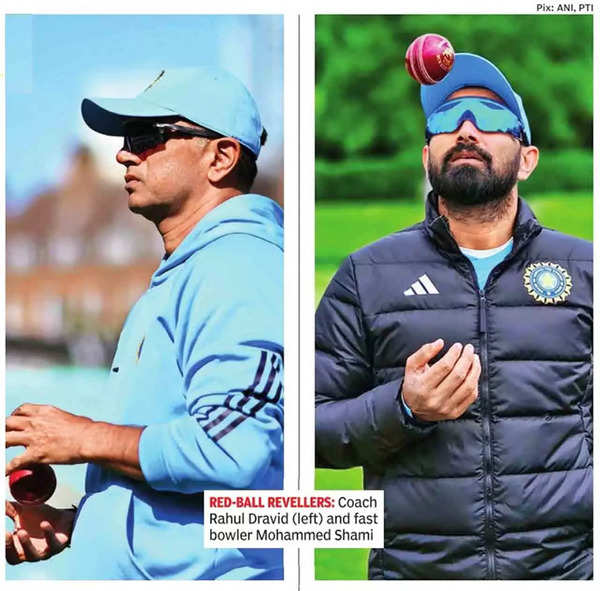
Both teams recently faced each other in the Border Gavaskar Trophy in India and the hosts dominated the series, riding on some spectacular performances from spin twins Ravichandran Ashwin and Ravindra Jadeja. The duo collectively picked up 47 wickets. The WTC final, however, is going to be a different ball game. TOI takes a look at the tactics on which the outcome of the final will depend.
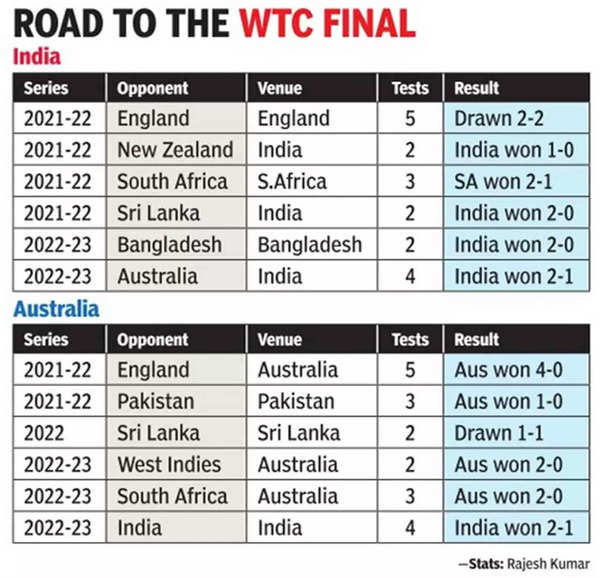
How Indian openers counter the new ball
A good opening partnership was the catalyst in India dominating the first four Tests of the 2021-22 Test series in England. During that time, the openers KL Rahul and Rohit Sharma scored big runs. Both scored match-winning hundreds - Rahul in the second Test at Lord's and Rohit in the fourth Test at The Oval. Rohit scored 368 runs in the first four Tests at an average of 52.57 with one hundred and two half-centuries. Rahul was not far behind and ended with 315 runs from the four Tests at an average of 39.37.
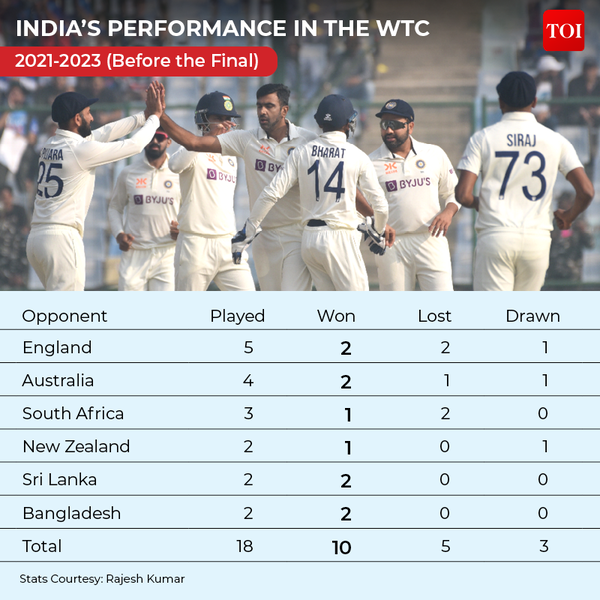
With Rahul injured, Shubman Gill is set to open in the WTC final alongside Rohit. Gill has been in stellar form across international formats in 2023 and also the recently-concluded IPL. But playing the Australian new ball attack comprising Mitchell Starc, Pat Cummins and Scott Boland on seamer-friendly conditions will be a totally different ball game.
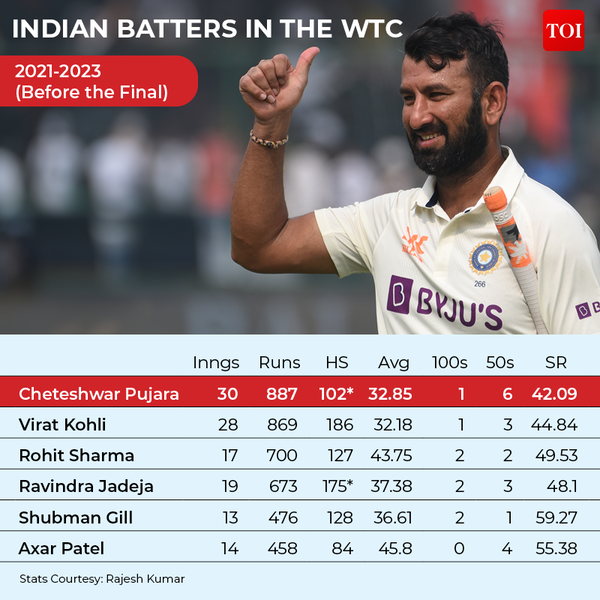
In all likelihood, it will be a fresh pitch with the surface being dry at The Oval - the venue for the WTC final. In such conditions, both Gill and Rohit have to ensure the Aussies don't get a flurry of wickets with the new ball. A decent enough start will go a long way in India getting the initial advantage.
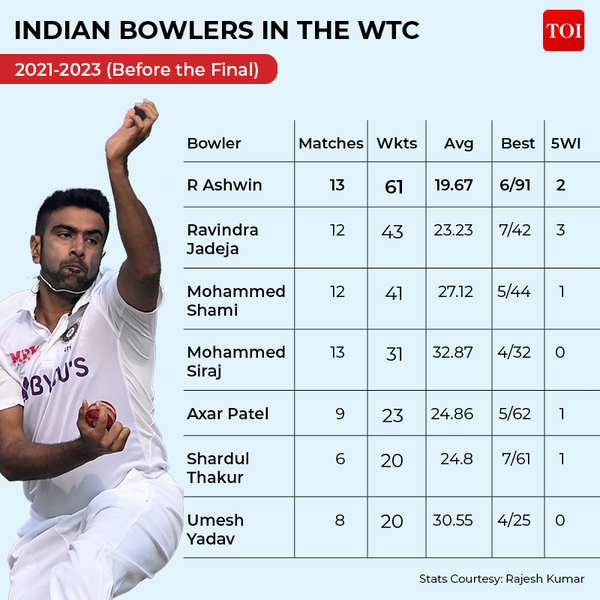
Ashwin against the Australian southpaws
Ravichandran Ashwin and his success rate against left-handed batters is just out of this world. Ashwin holds the record of dismissing the most number of left-handed batters in Test cricket. In 92 Tests so far, Ashwin has scalped 474 wickets out of which 241 are lefties - a success percentage of 50.84 percent. James Anderson, who is second on the list of bowlers with most left-handed victims, has 212 wickets to his credit and a 30.95 percent victim ratio.
Interestingly, Australia has five southpaws in their most likely playing XI. Right from openers David Warner and Usman Khawaja to Travis Head and wicketkeeper-bat Alex Carey and in the lower-order Mitchell Starc, Ashwin will have a buffet of southpaws to feast on. Even based on recent form, Ashwin has had the wood on the Aussies - especially their left-handers.
When Australia travelled to India earlier this year for the Border Gavaskar Trophy, Ashwin claimed 25 wickets in four Tests at an average of 17.28 and a strike-rate of 39.9. Out of the 25 victims, 15 were left-handers. It's a no-brainer that against five left-handers of the opposition, Ashwin will be India's trump card.
Playing their own brand of cricket
With the advent of 'Bazball', England have gone the ultra-aggressive approach in Test cricket. It has worked for the English team so far. The Australians, too, play with an aggressive bent of mind - whether it is with the bat or the ball. In non-subcontinental conditions, Australian batters easily maintain a run-rate of 4-4.5 runs per over. They try to push the game ahead. For India, both bowlers as well as batters, the challenge will be to dictate the pace of the final while playing their own brand of cricket.
By going the English or Aussie way, the Indian team will dig their own grave. The challenge will be to ensure the match goes till the fifth day and it doesn't move at such a frenetic pace that everything is over within three days - something the Aussies relish upon. Therefore, the bowlers will have to ensure that while going for wickets, the opposition run-rate doesn't go through the roof.
Tight bowling, keeping a check on the Australian run-rate will automatically result in wickets. While batting, throwing the bat around for an eye-catching 20-25 won't cut the ice. The batters will have to stay put at the crease and bat for long hours. In English conditions, the batters should look to wear down the opposition bowlers and then cash in at the later part when they get tired. But for that to happen, the initial fight would be imperative.
How Indian bowlers utilise the Dukes ball
The WTC final will be played using the Grade 1 Dukes ball manufactured in England. The Dukes ball differs significantly from the Kookaburra ball, mainly used in Australia and South Africa, or the SG Test ball used in India. As compared to the Kookaburra ball or the SG ball, the Dukes ball stays harder for a longer period of time, and its pronounced seam helps the ball to move in the air and off the pitch as well for a considerable length of time.
The Indian seamers, especially Mohammed Shami and Mohammed Siraj, will have to get used to bowling with the Dukes ball as quickly as possible. The backup pacers Shardul Thakur, Umesh Yadav and Jaydev Unadkat, whosoever gets picked in the playing XI, will have to share the mantle and get the ball to talk. Shami's record in England isn't that great. He has 38 wickets to his name in 13 Tests at an average of 40.52 and a strike-rate of 69.3. His partner Siraj is somewhat better, having picked 18 wickets in five Tests at an average of 33.00.
In comparison to the Indian seamers, the Australian pace brigade led by Mitchell Starc and skipper Pat Cummins have a better record in England while bowling with the Dukes ball. Starc has 33 wickets in nine Tests, and he strikes every 54.6 balls in England. Cummins has a devastating effect in England. He has 29 wickets to his name in five Tests at an average of 19.62 and he strikes every 43.6 balls. The Indian fast bowlers, therefore, have to go that extra mile in the final.
Slip catching will be key for a positive result
India will be playing its second consecutive WTC final. In 2021, in the inaugural WTC final, India had lost the summit clash to New Zealand by 8 wickets. Besides the quintessential batting failures in both innings on a seaming wicket, the Indian team was also plagued by dropped catches at crucial junctures of the 2021 final.
After India made 217 in their first essay, the bowlers - led by Mohammed Shami - had the Kiwis tottering at 162/6, and a decent lead was in the sight of the team. But then catches were dropped and New Zealand went past the Indian first innings total. The tail wagged as the Black Caps reached a total of 249.
Later in the match, during New Zealand's second innings, a tricky chase of 140 was made to look easy as the Kane Williamson-led side romped home, reaching the target by losing just two wickets. This after the Kiwis were reduced to 44/2. Again, a couple of missed chances were the Indian team's bane.
This time, against the Australians, the Indian team wouldn't want to repeat the mistakes of the past. The catching standards, especially in the slip cordon, have to be top notch. Even a single drop may have a game-changing impact, and the Indians have to be doubly careful about that.
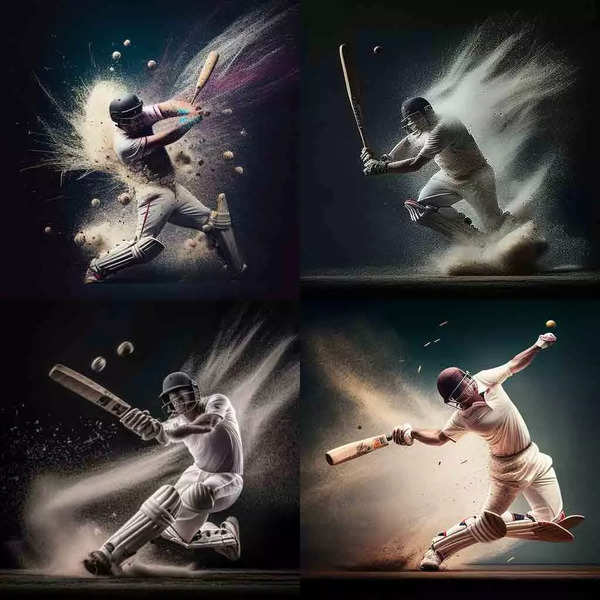

About the Author
Hindol BasuHindol Basu is a Principal Correspondent with the The Times of India. Over the years, as a sports journalist, Hindol has covered important events like the 2012 London Olympics, 2008 Beijing Olympics, 2010 Commonwealth Games and the 2011 Cricket World Cup. Hindol has had a diverse profile having worked in all forms of media - TV, Radio, New Media and Print. Besides, being an avid blogger, Hindol plays the guitar, writes poetry and is interested in photography.
Start a Conversation
FOLLOW US ON SOCIAL MEDIA
FacebookTwitterInstagramKOO APPYOUTUBE

